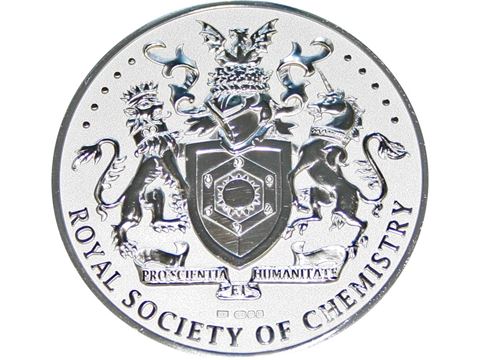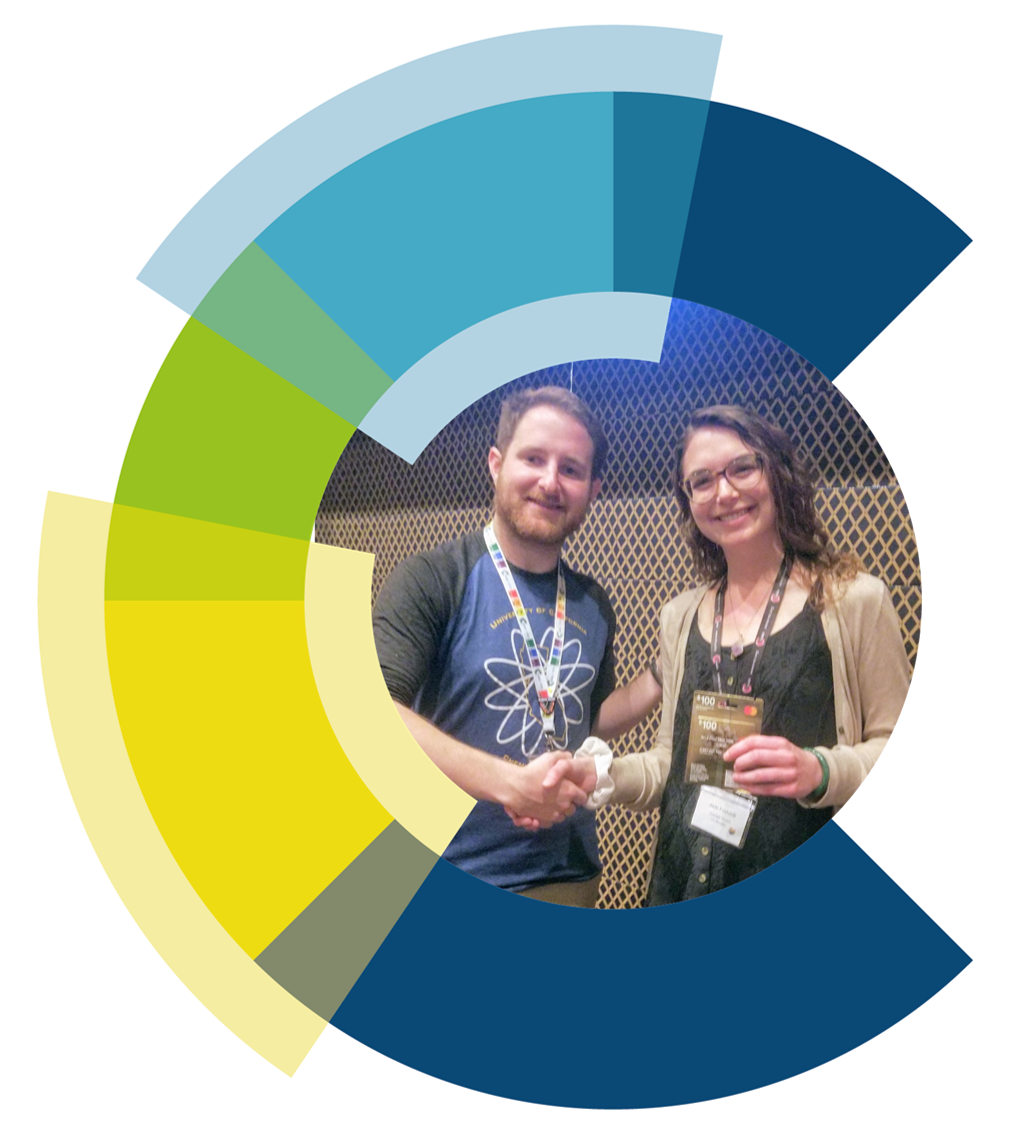
Connor Easley from UC Riverside, Chair of the UCCS, and Jade Fostvedt From UC Berkeley at the 2019 University of California Chemical Symposium.
This year the University of California Chemical Symposium, the 4th annual meeting since its founding by Prof. Seth Cohen from UC San Diego, continued to grow and develop into the world’s premier chemistry conference run entirely by and for graduate students and postdoctoral researchers. This year’s UCCS brought nearly 150 attendees from across the University of California and beyond. Special guests this year included the opening keynote presentation for the inaugural Ursa Lecture from Nobel Laureate from CalTech, Professor Rudolph A. Marcus. Prof Marcus delivered a beautiful talk on ‘Connecting the Dots’ along his lengthy and impressive career, inspiring attendees to pursue their own research with the same curious and optimistic attitude.
The closing keynote lecture was given by the inaugural Lux Lecturer, Prof Michelle Chang from UC Berkeley, who is also an Associate Editor for Chemical Science. The attendees enjoyed how approachable and interesting her lecture was for a broad audience, even those who previously had no experience with chemical biology.

Not only were the plenary speakers phenomenal in sharing the stories of their research, but the student and postdoc attendees also gave excellent oral and poster presentations. Several RSC journals provided research presentation prizes to recognize these outstanding young researchers. The RSC’s flagship journal, Chemical Science, provided Research Presentation Prizes for oral presentations and several other RSC journals supported the meeting by sponsoring prizes for poster presentations.
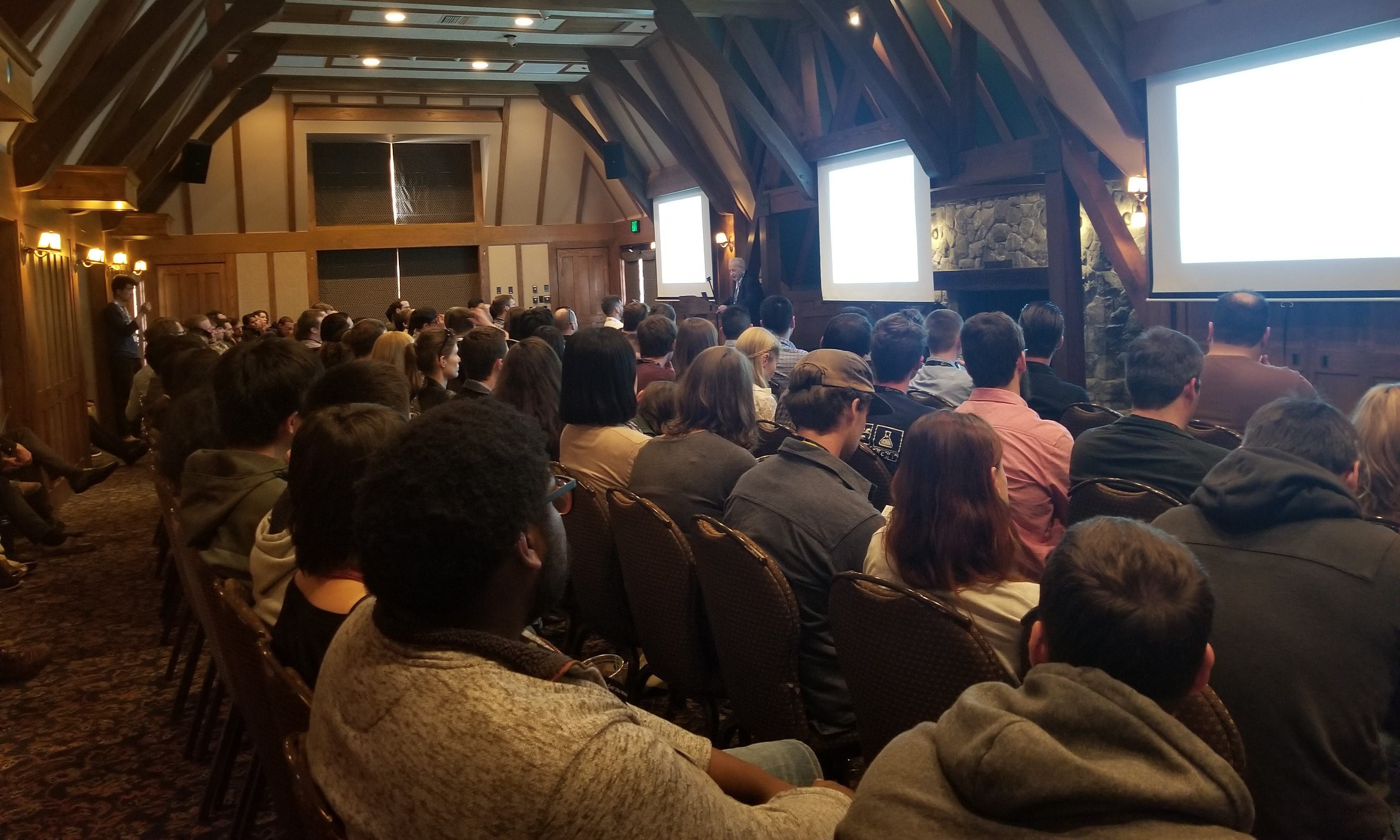
Nobel Laureate Prof Rudy Marcus delivers the inaugural Ursa Lecture at the 2019 University of California Chemical Symposium at Lake Arrowhead, March 24, 2019.
Oral Presentation Prizes
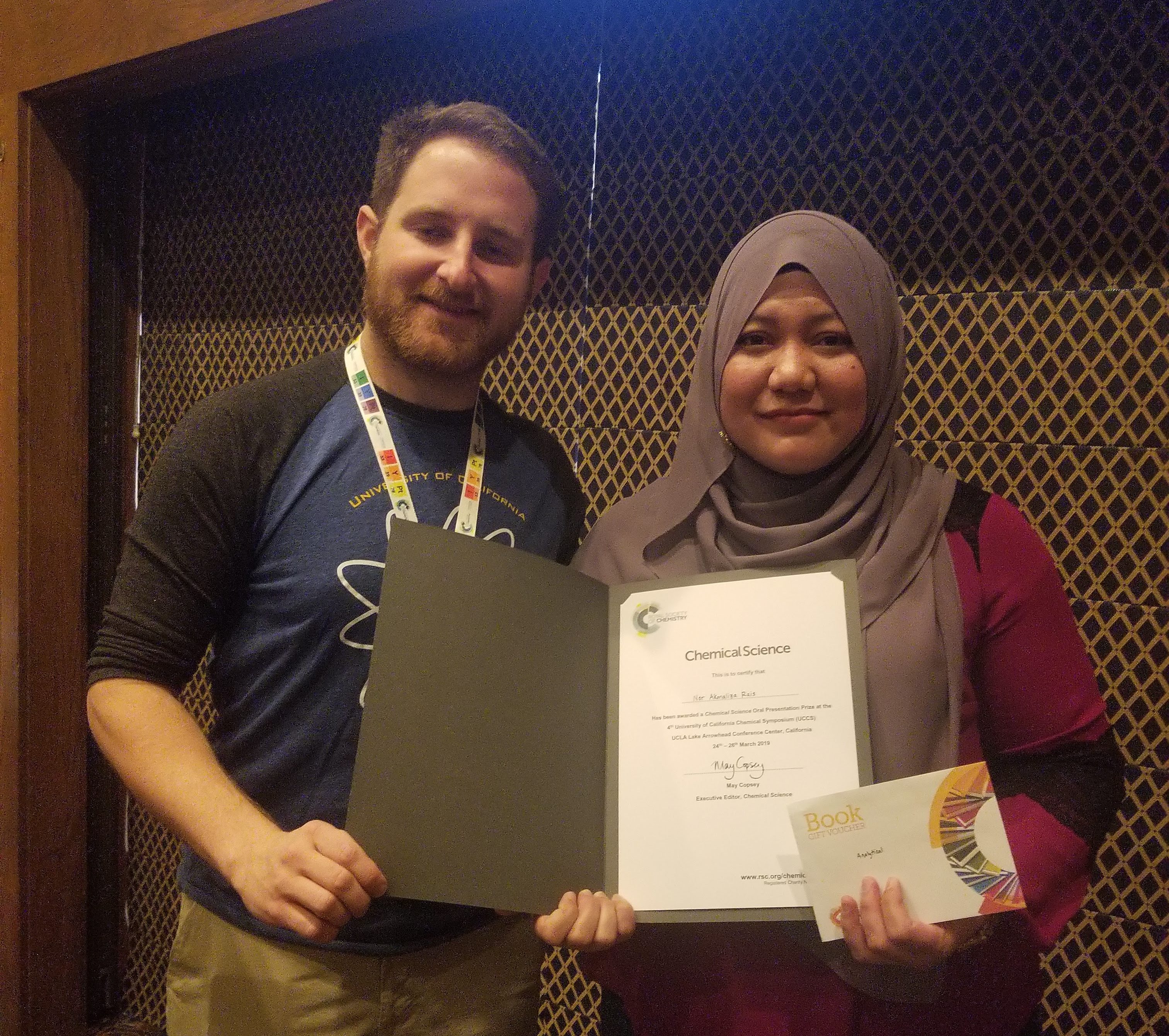
Nor Akmalia Rais, graduate student in the Xue group at UC Riverside, receives her Chemical Science Research Presentation Prize from Chair Connor Easley at the 2019 University of California Chemical Symposium in Lake Arrowhead.
The RSC’s flagship journal, Chemical Science, provided Research Presentation Prizes for oral presentations in each of the six sub-categories of disciplines in the chemical sciences. The oral presentation prize in the ‘Analytical’ category went to Nor Akmaliza Rais from the Cheng Research Group, led by Prof Quan “Jason” Cheng at UC Riverside, for her talk on ‘Nanoparticle Enhanced Surface Plasmon Resonance (SPR) Biosensing on an Antifouling Lipid Membrane in Undiluted Serum.’
The Chemical Science prize in the ‘Chemical Biology/Biochemistry’ category went to Tyler Heiss from UC Irvine for his presentation ‘Cyclopropeniminium Ions Exhibit Unique Reactivity with Bioorthogonal Phosphines.’ Tyler is a graduate student in the Prescher Lab, led by Prof Jen Prescher, who actively posts about the group’s activities on Twitter.
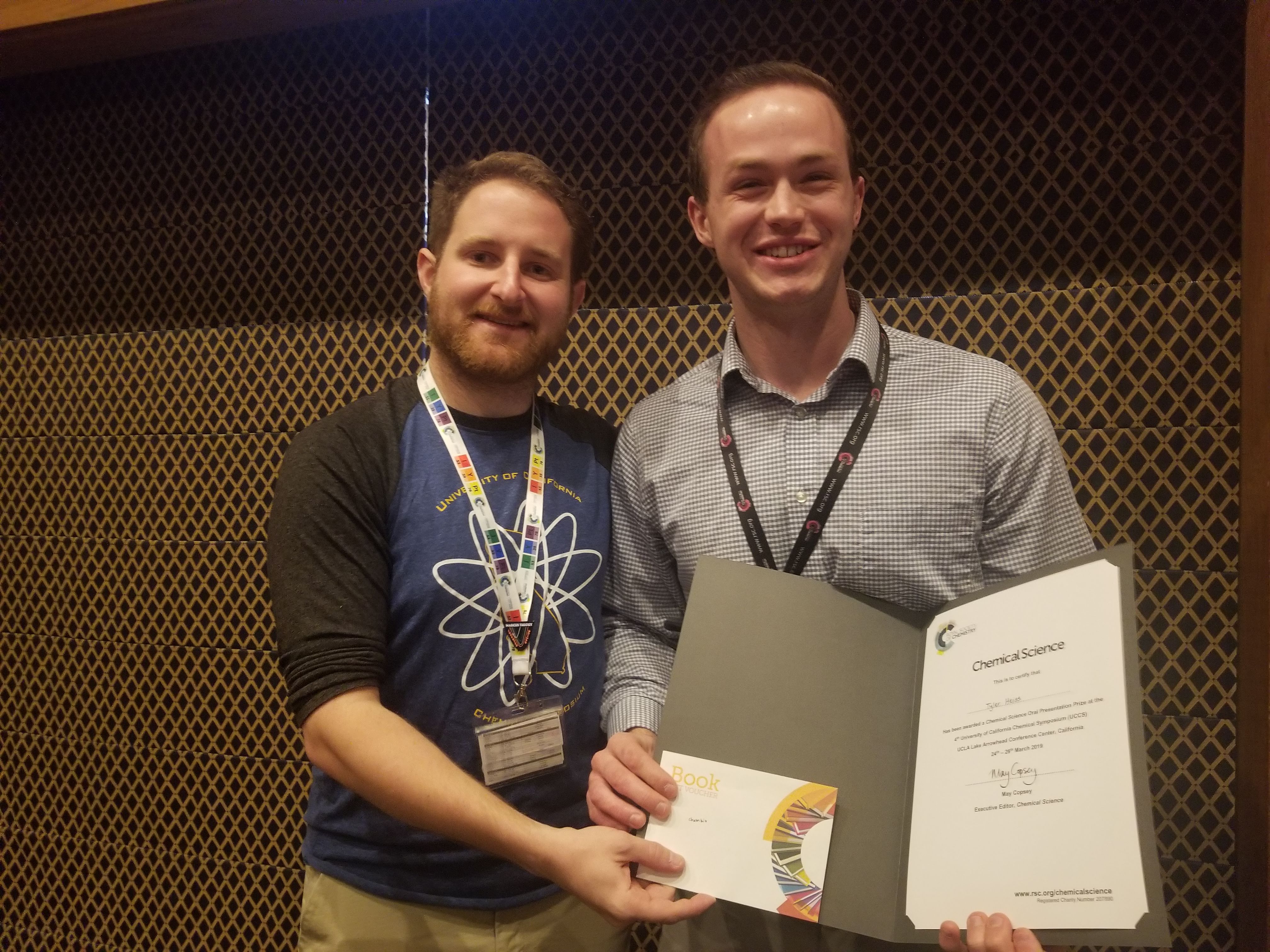
Tyler Heiss, graduate student in the Xue group at UC Riverside, receives his Chemical Science Research Presentation Prize from Chair Connor Easley at the 2019 University of California Chemical Symposium in Lake Arrowhead.
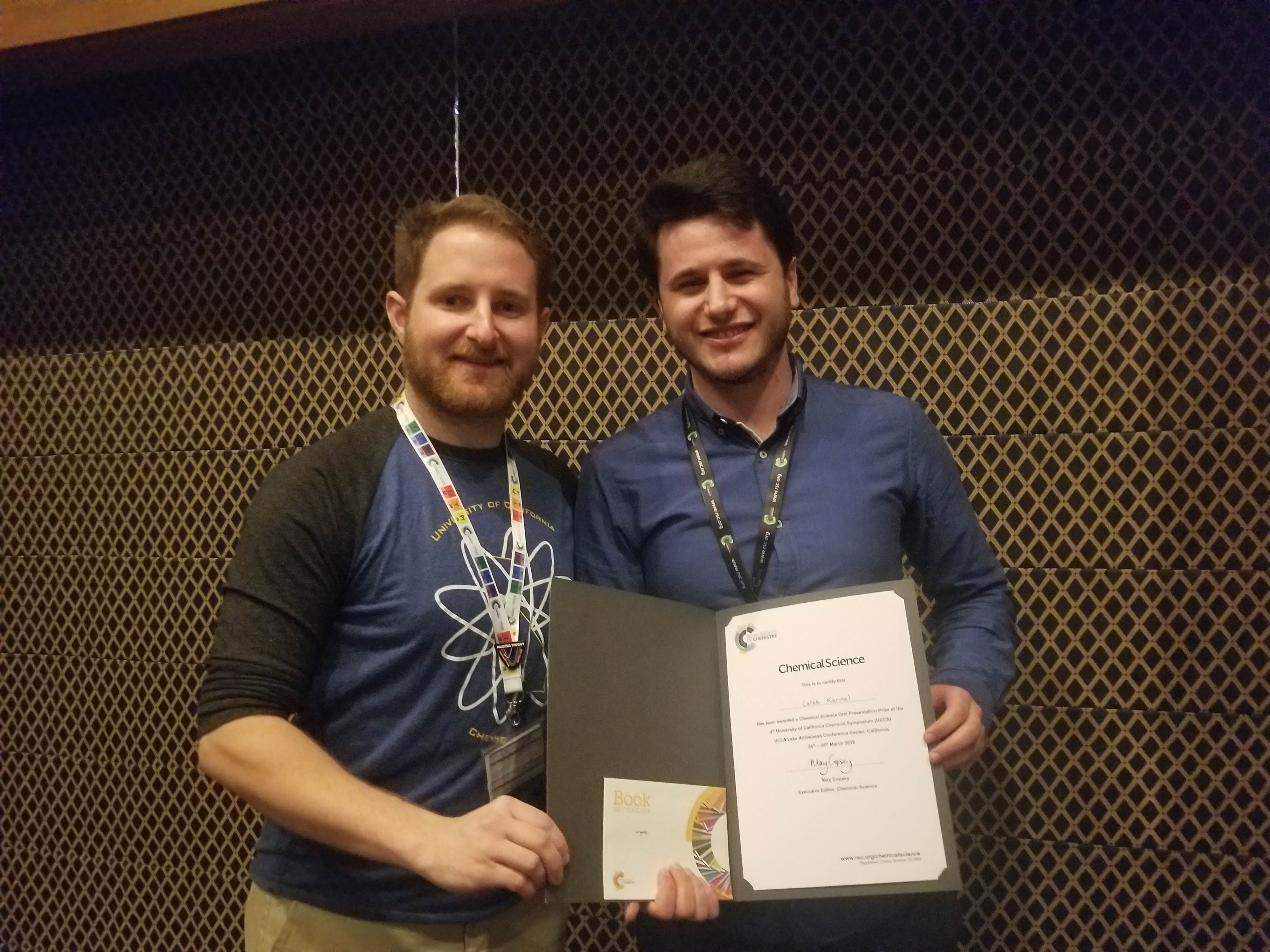
Caleb Karmel, graduate student in the Hartwigroup at UC Berkeley, receives his Chemical Science Research Presentation Prize from Chair Connor Easley at the 2019 University of California Chemical Symposium in Lake Arrowhead.
The Chemical Science prize in ‘Organic Chemistry’ went to Caleb Karmel from the Hartwig Group at UC Berkeley for his talk on the ‘Iridium-Catalyzed Silylation of Aryl C-H Bonds.’
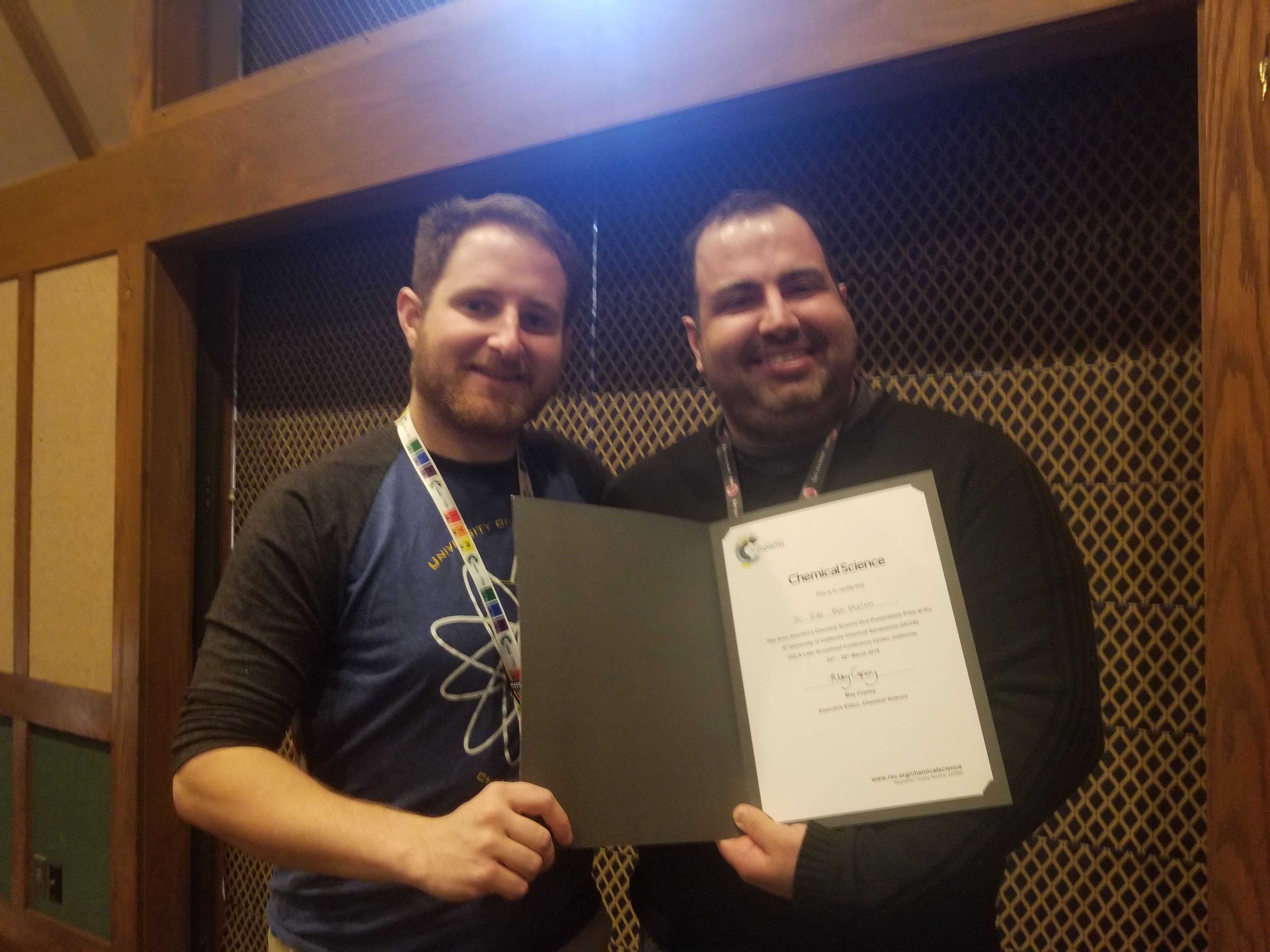
Dr. Ido Ben-Shalom from UC San Diego receives his Chemical Science Research Presentation Prize from Chair Connor Easley at the 2019 University of California Chemical Symposium.
Prizes also went to Andrew Ostericher for his presentation in the ‘Inorganic’ category for the ‘Rational Tuning of Hydrogen Transfer for CO2 Reduction and Hydrogen Evolution’ and Sebastian Hietzschold for his presentation in the ‘Materials/Nano’ category, ‘Reductase-Free Synthesis of Highly Monodispersed Silver Nanoparticles Using NADPH as the Sole Reducing Agent.’The ‘Physical/Theoretical/Computational’ prize was awarded to Dr. Ido Ben-Shalom for his talk on ‘Simulating Water Exchange to Buried Binding Sites.’
Poster Prizes
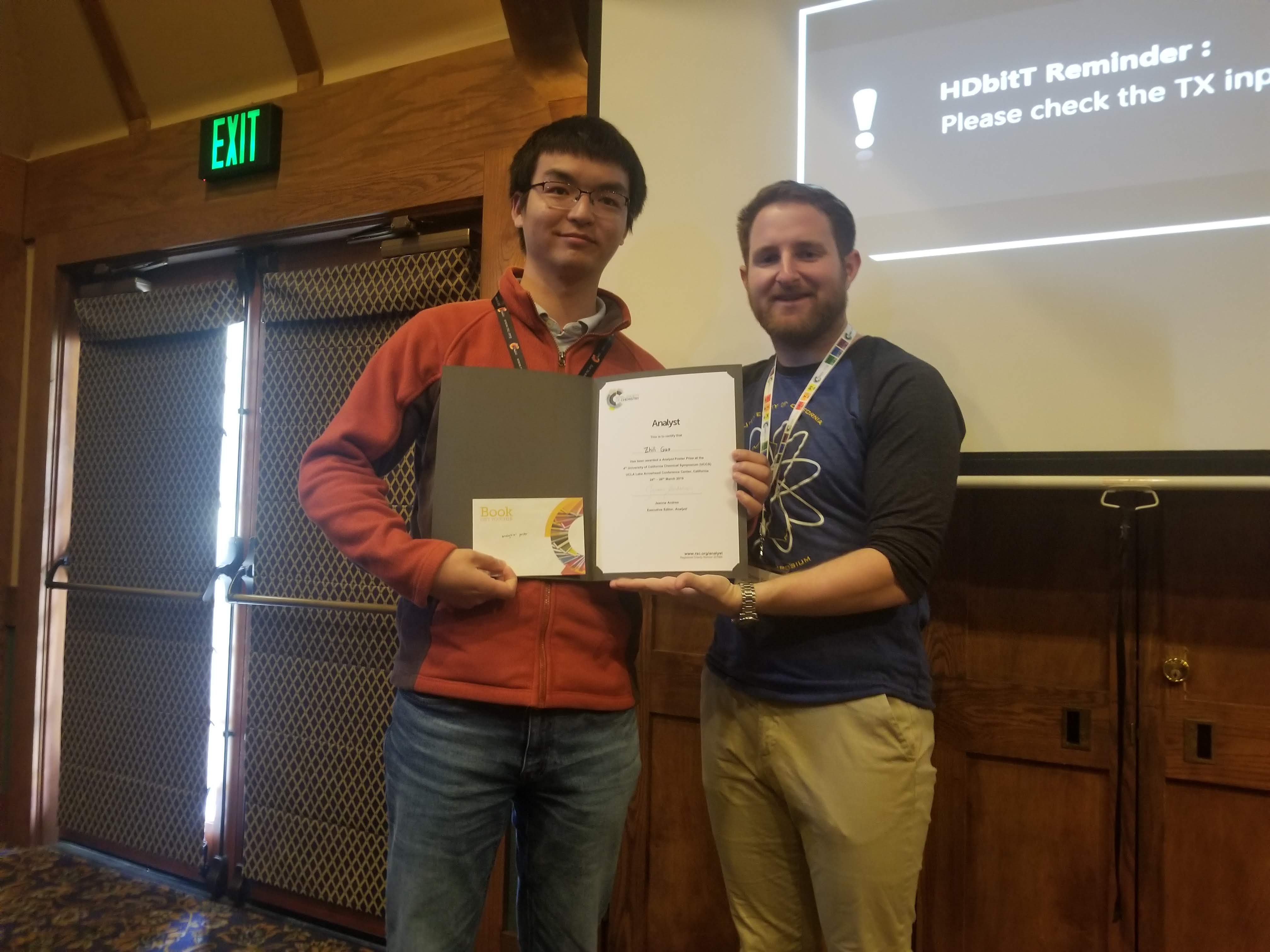
Zhili Guo, graduate student in the Xue group at UC Riverside, receives the Analyst poster prize from Chair Connor Easley at the 2019 University of California Chemical Symposium in Lake Arrowhead.
From Analyst, the poster prize went to Zhili Guo from UC Riverside. The title of his poster was ‘A Chemical Approach to Quantify Fatty Acid Uptake in Single Cells.’ Like Nor, who won the oral presentation prize in this category, Zhili is a graduate student in the research group of Min Xue, which is focused on developing chemical probes to achieve single-cell resolution for bioanalytical methods. Work like Zhili’s would enable more precise detection of metabolites from tumor cells, for example, which would allow surgical treatments for cancer to be more effective.The Organic & Biomolecular Chemistry prize in the Chemical Biology/Biochemistry category went to Sierra Williams from UC Irvine for her work on ‘Orthogonal Bioluminescent Probes from Hybrid Luciferins.’

Sierra Williams, graduate student in the Prescher group at UC Irvine, receives the OBC poster prize from Chair Connor Easley at the 2019 University of California Chemical Symposium in Lake Arrowhead.
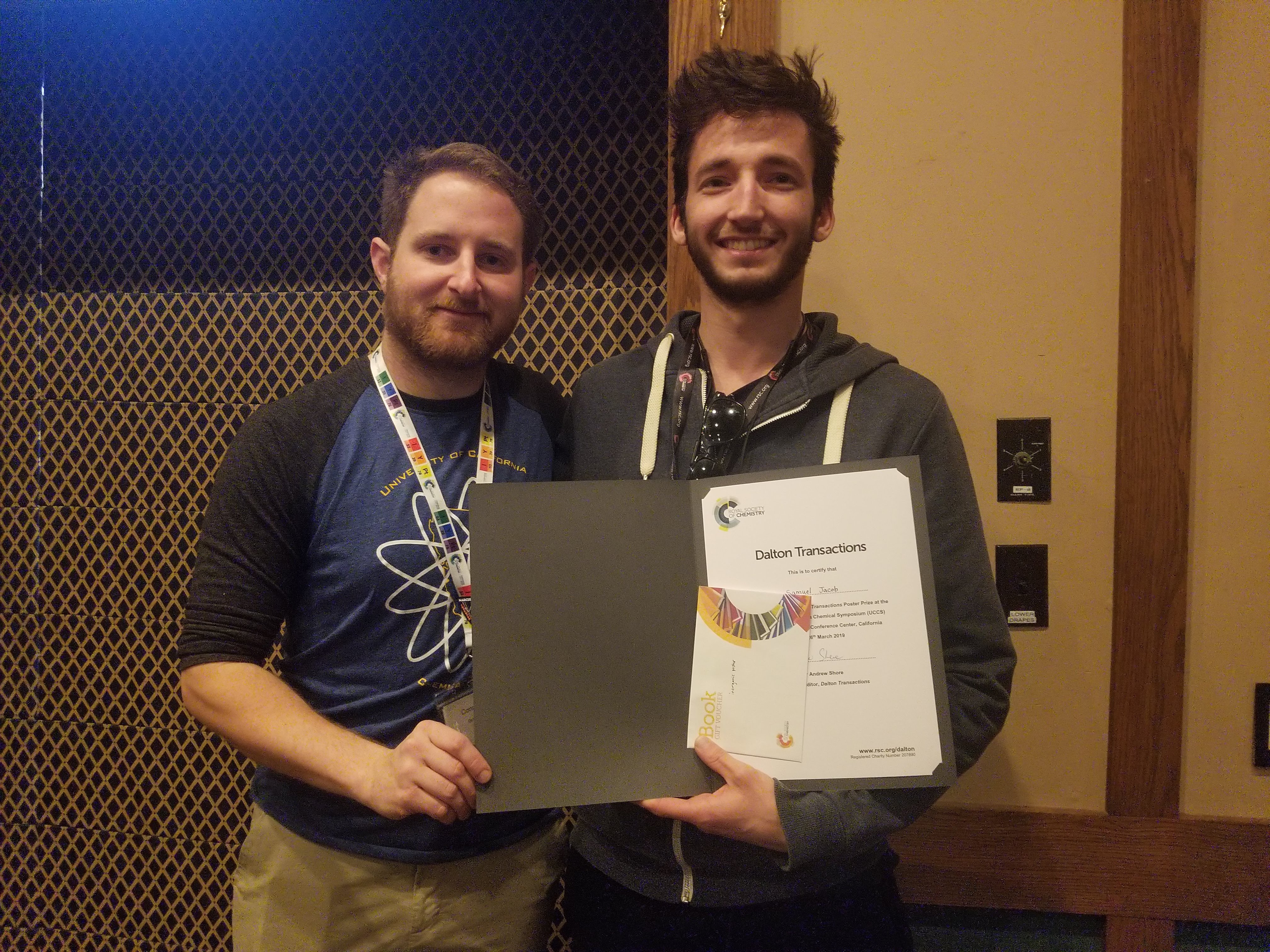
Samuel Jacob, graduate student at UC Santa Barbara, receives the Dalton Transactions poster prize from Chair Connor Easley at the 2019 University of California Chemical Symposium in Lake Arrowhead.
The prize from Dalton Transactions for the ‘Inorganic’ category went to Samuel Jacob from UC Santa Barbara for his poster, ‘Investigation of a Redox Active Tetra-Nickel Cluster for Small Molecule Reactivity.’
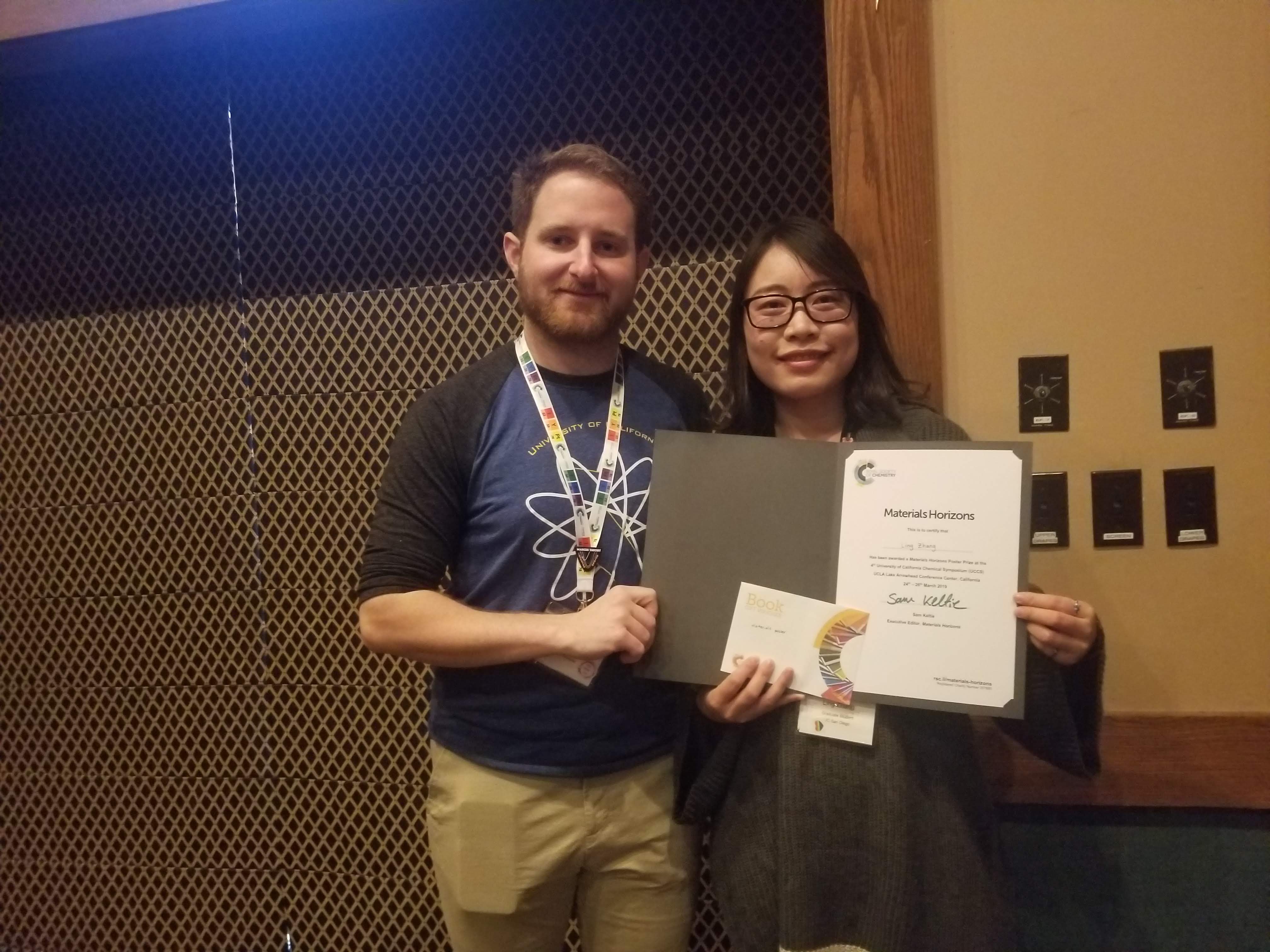
Ling Zhang, graduate student from UC San Diego, receives the Materials Horizons poster prize from Chair Connor Easley at the 2019 University of California Chemical Symposium in Lake Arrowhead.
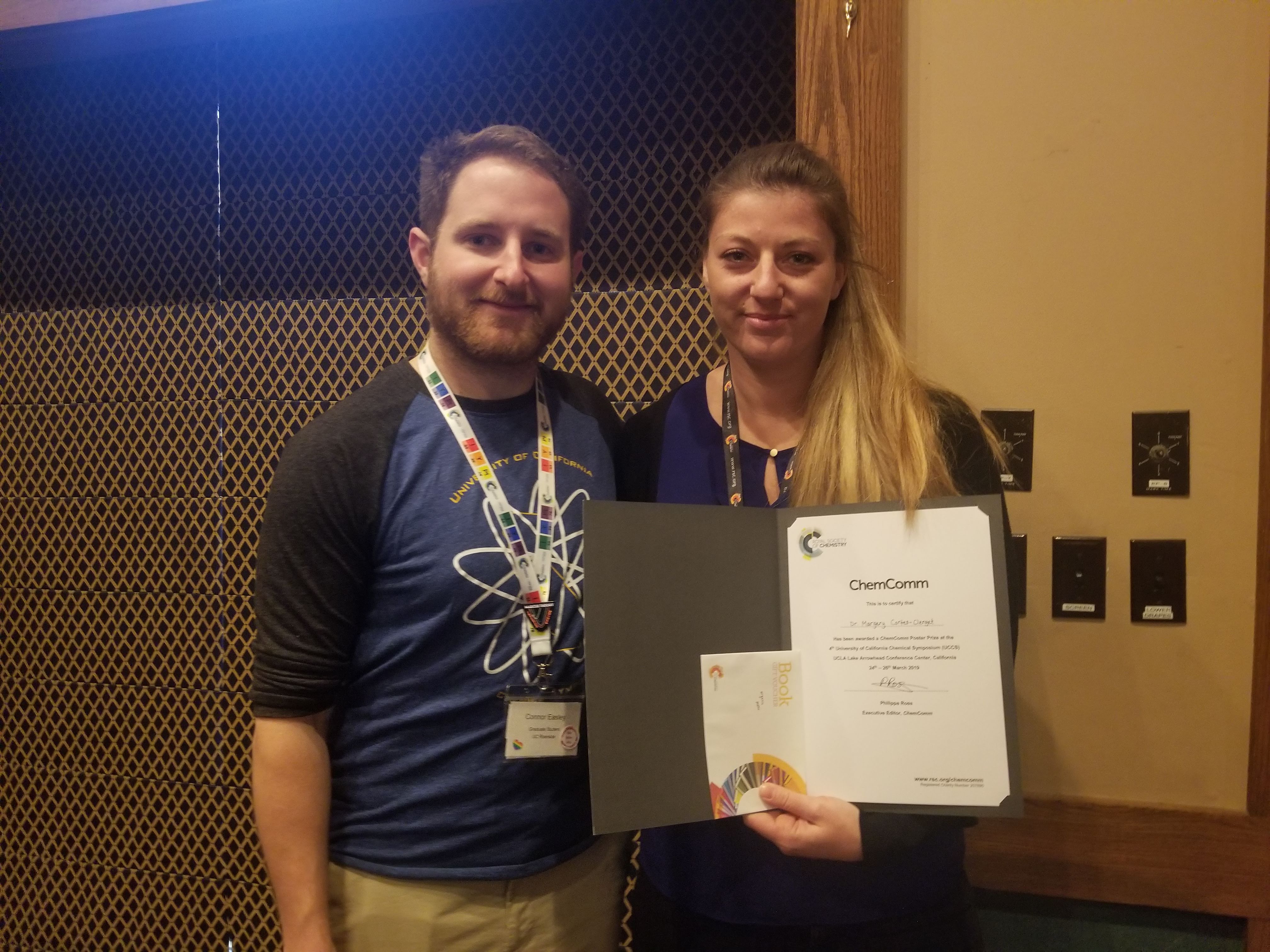
Margery Cortes-Clerget, graduate student from UC Santa Cruz, receives the ChemComm poster prize from Chair Connor Easley at the 2019 University of California Chemical Symposium in Lake Arrowhead.
The Materials/Nano prize from Materials Horizons went to Ling Zhang from UC San Diego for her poster on ‘Hyper-Expandable Self-Healing Macromolecular Crystals.’
The ‘Organic’ category prize from Organic & Biomolecular Chemistry went to Margery Cortes-Clerget from UC Santa Barbara for her poster, ‘Bridging the Gap Between Transition Metal- and Bio-Catalysis.’
The PCCP poster prize in the Physical/Theoretical category went to A’Lester Allen from UC Santa Cruz, for his poster on the ‘Development of a Hollow Multibranched SERS Based Biosensor for Early Disease Detection.’
Lightning Talks
One unique aspect of the UCCS is the Lightning Talks, which are short, minimalist and direct presentations. With a total of 5 minutes and 3 (non-animated) slides allowed , speakers have only 3 minutes to talk and 2 minutes to answer questions about their work. The topics are broad and cover the span of the chemical sciences. The audience participates by live-voting on their favorite talks, to crowd-source judging to determine the winners. This year’s Lightning Talks were all fabulous, but there were a few that really stood out to this particular audience.
The first place winner and recipient of a $100 cash prize was Jade Fostvedt from UC Berkeley for her talk, ‘Towards Low Valent Early Metal Systems: Small Molecule Reactivity of Tantalum N-Heterocyclic Carbene Complexes.’The second place winner and recipient of a $50 cash prize was David Nenon from UC Berkeley for his talk, ‘Design Principles for Trap-Free CsPbX3 Nanocrystals: Enumerating and Eliminating Surface Halide Vacancies with Softer Lewis Bases.’The third place award and a $25 cash prize went to Myles Drance from UC San Diego for his talk on ‘Coordination of Diatomic Boron Monofluoride to Iron.’
Congratulations to all of these award winners from the 2019 UCCS who gave outstanding presentations to their peers and experts in the field. We hope that everyone was able to share their research and also share in the research of others at the meeting, and we are already looking forward to the next one!













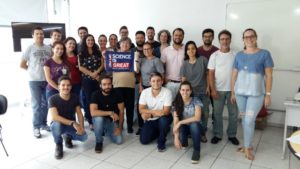
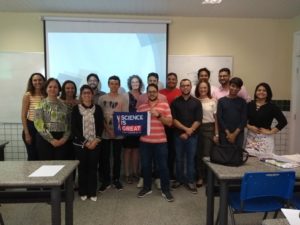
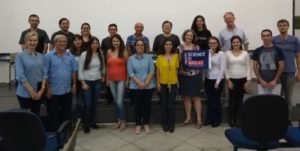
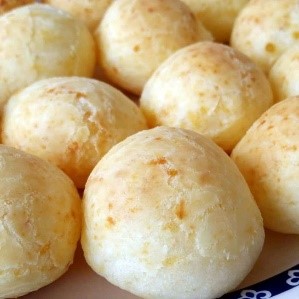
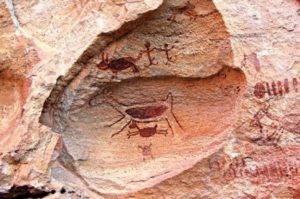
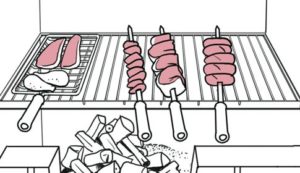
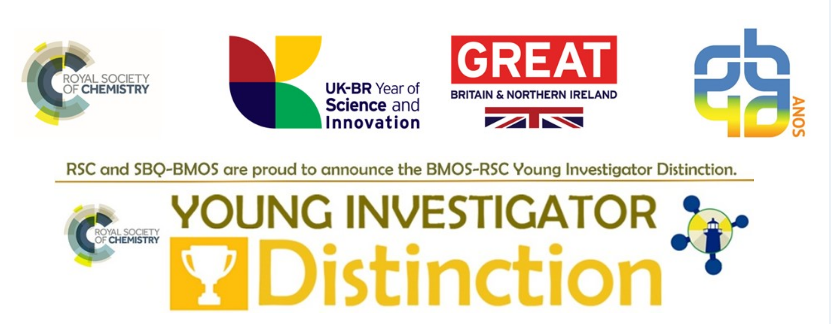
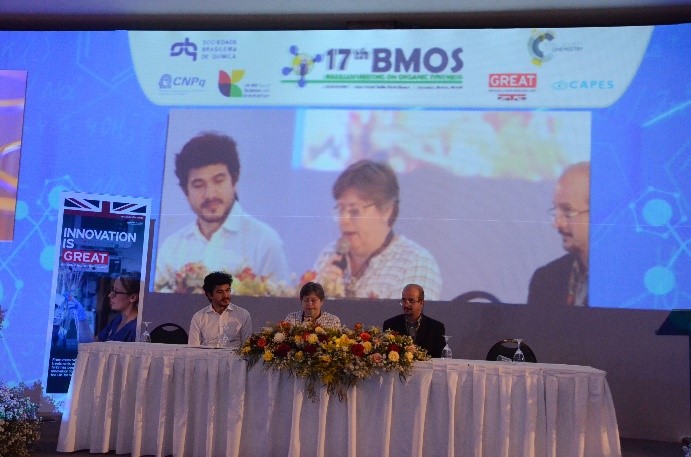
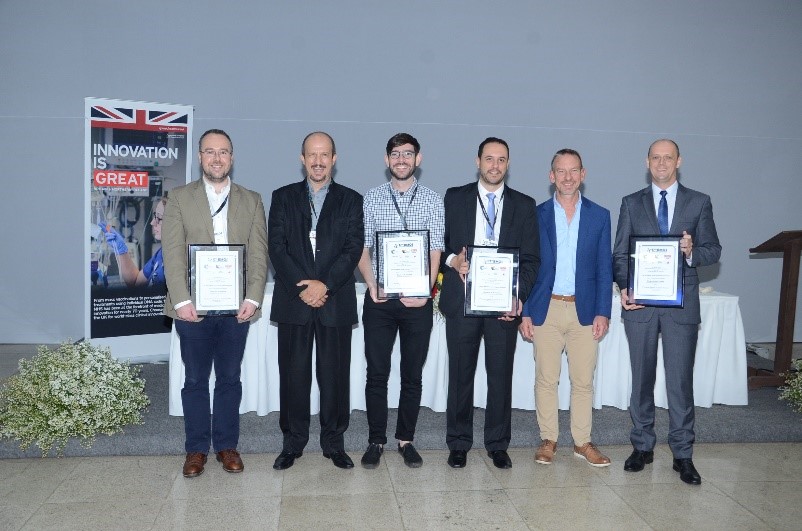
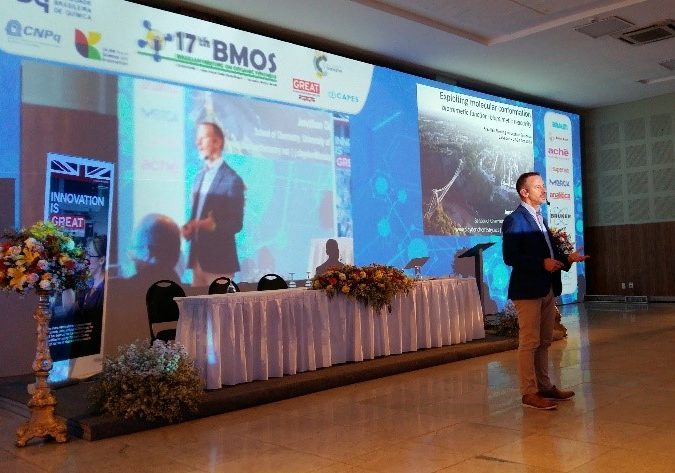
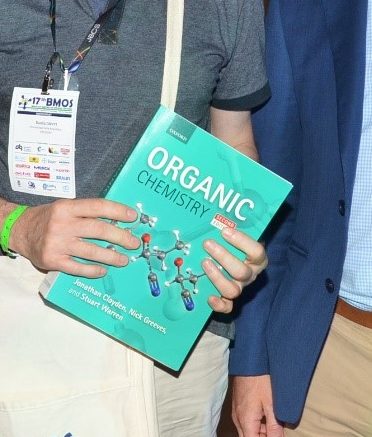
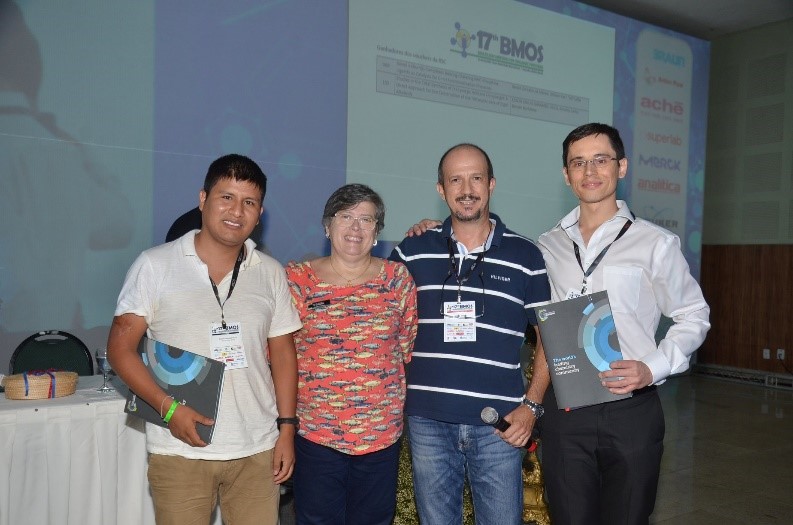






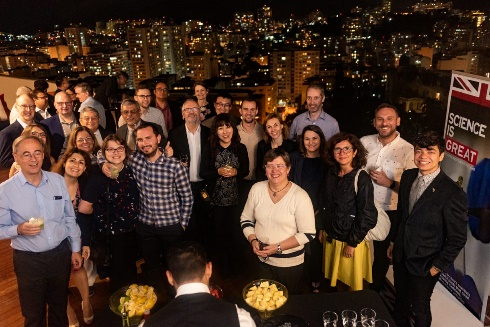
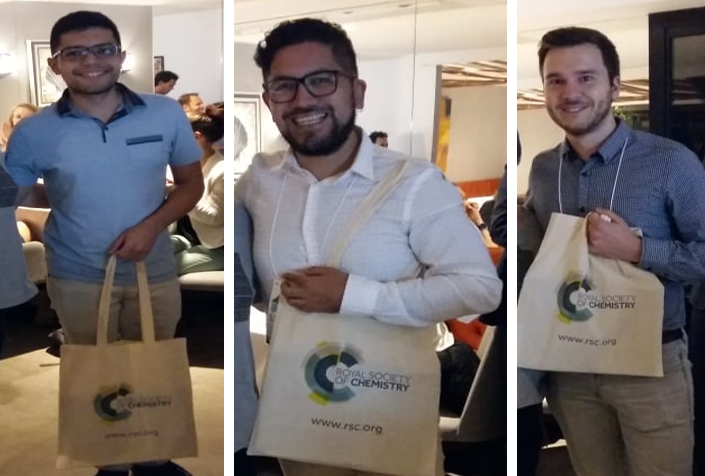

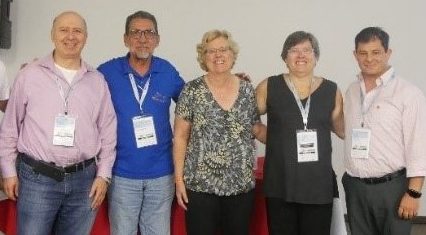
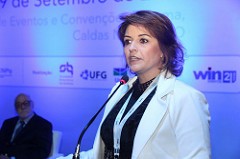
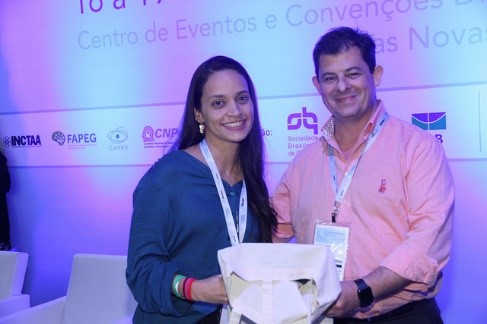

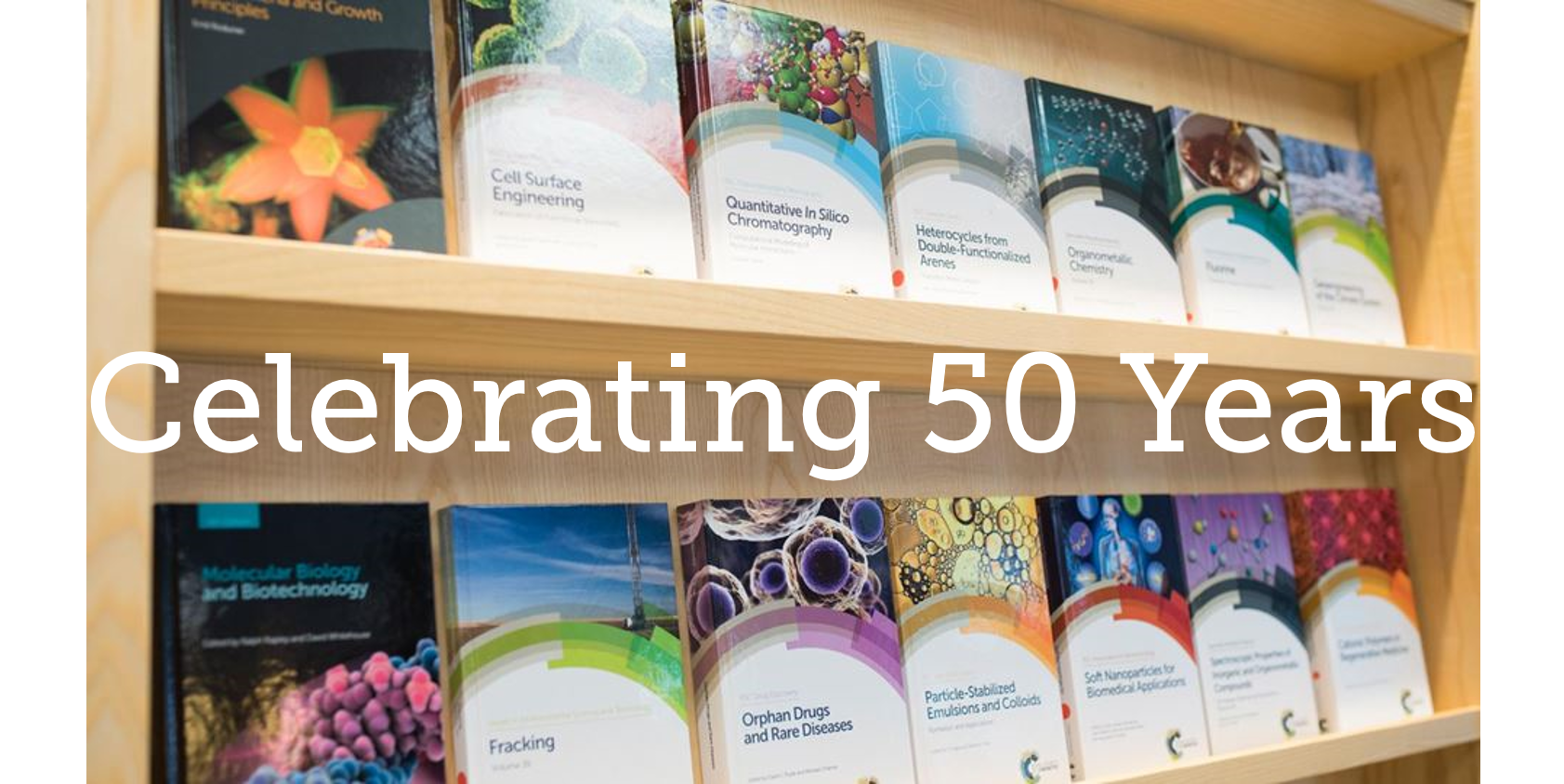
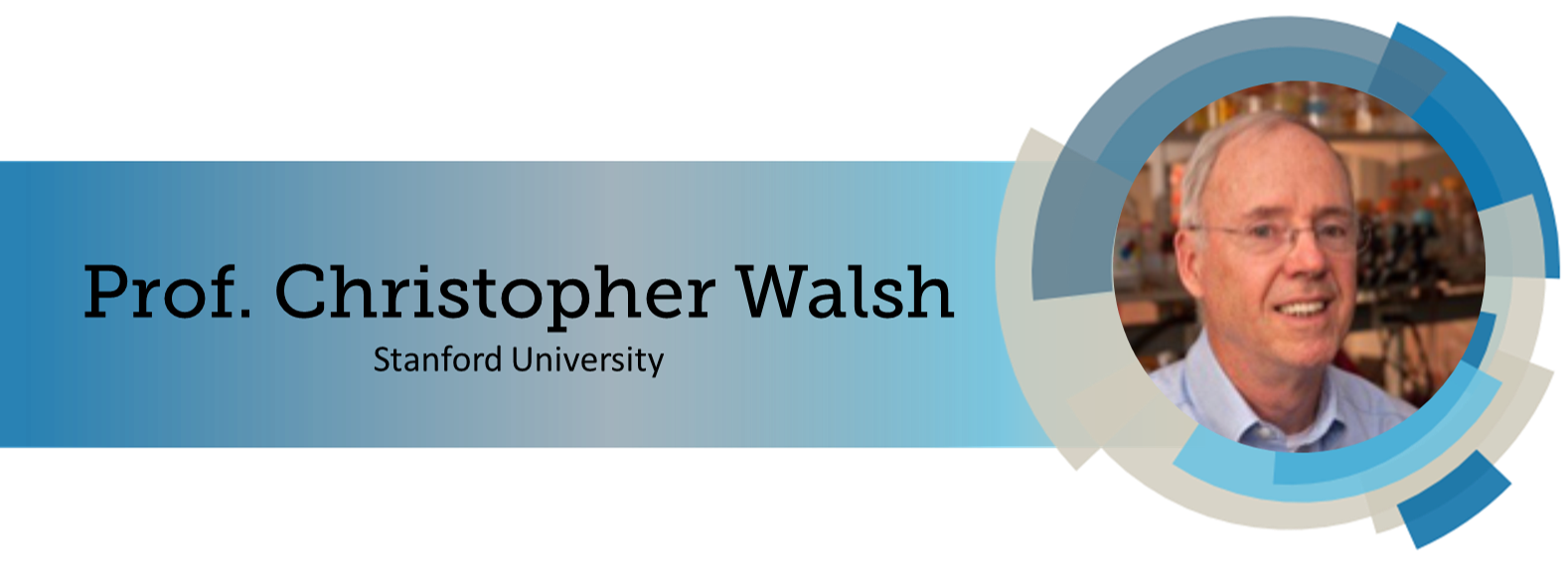
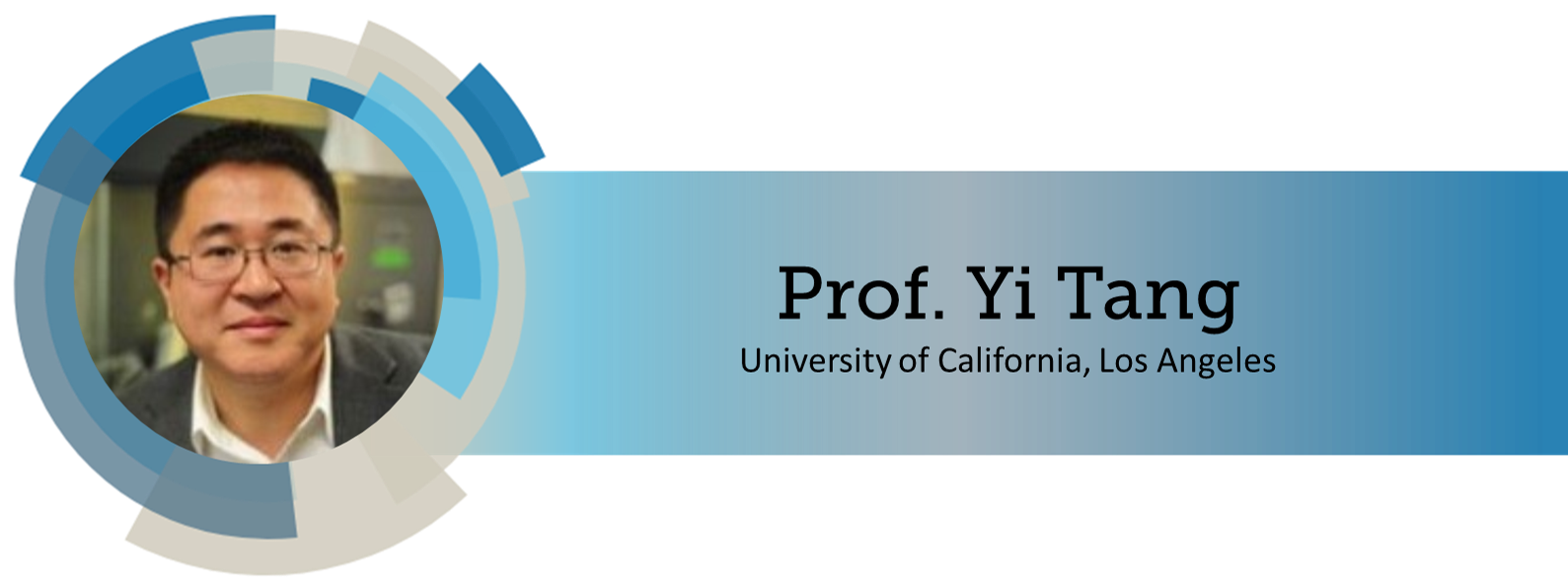
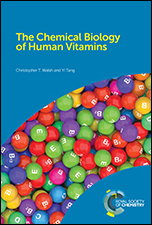
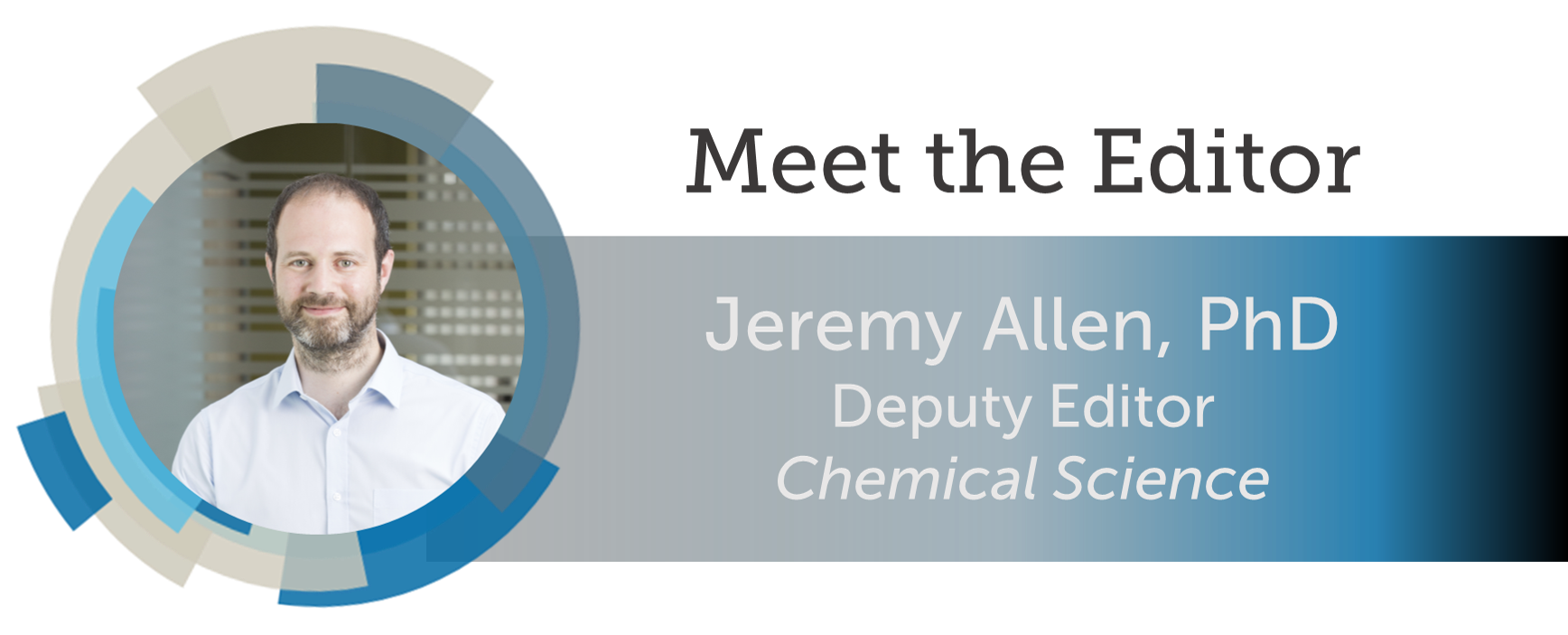
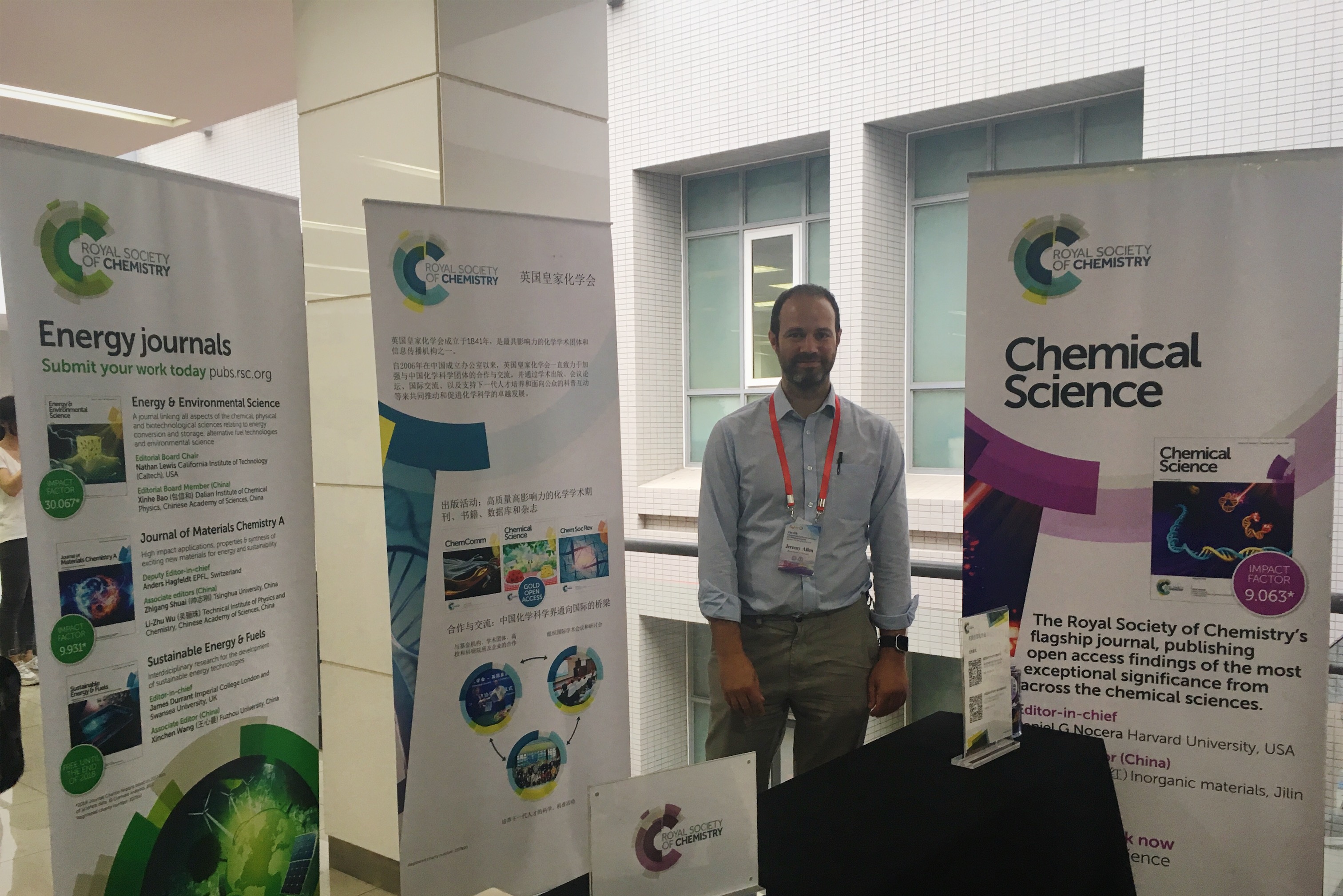
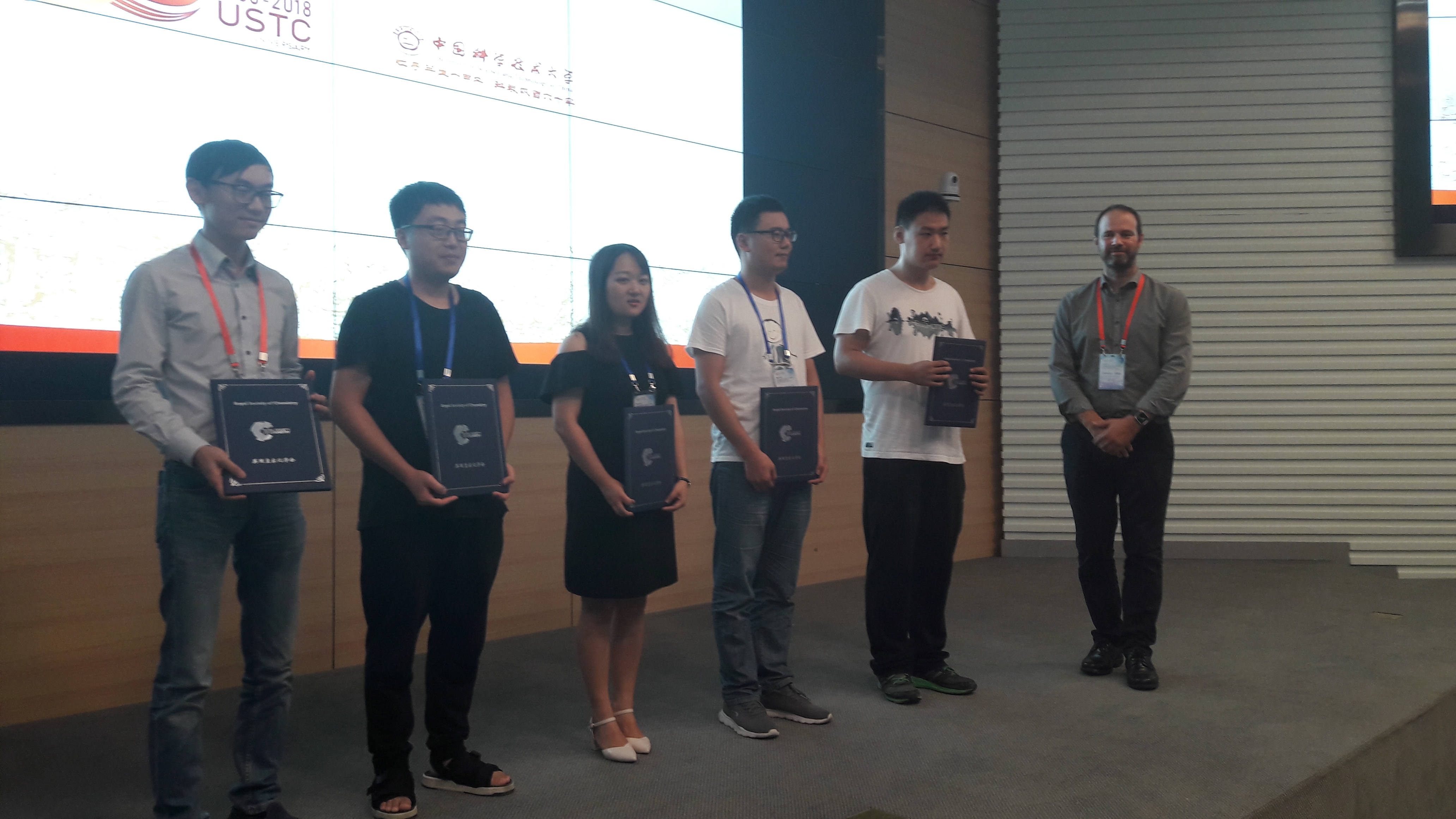
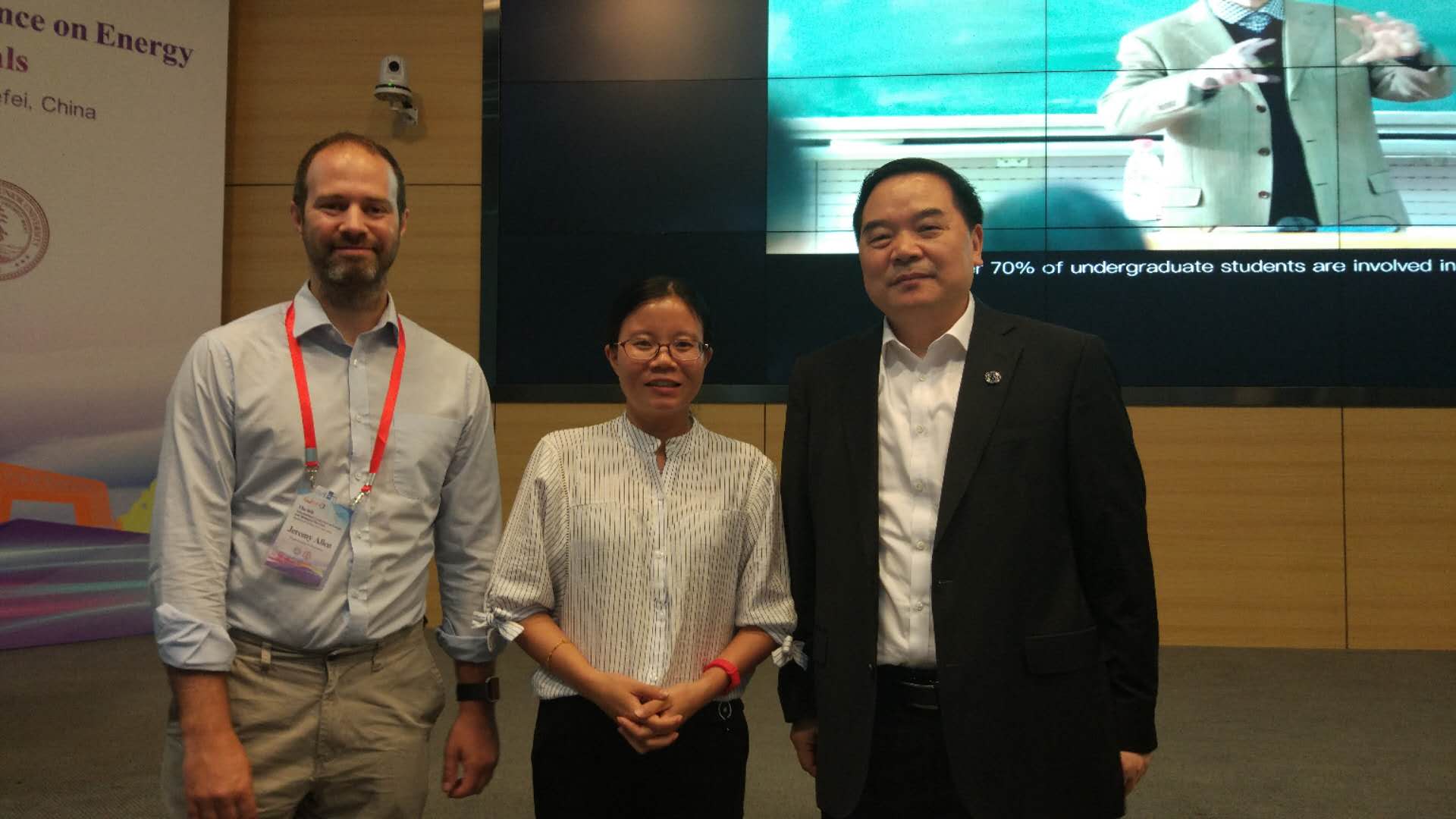
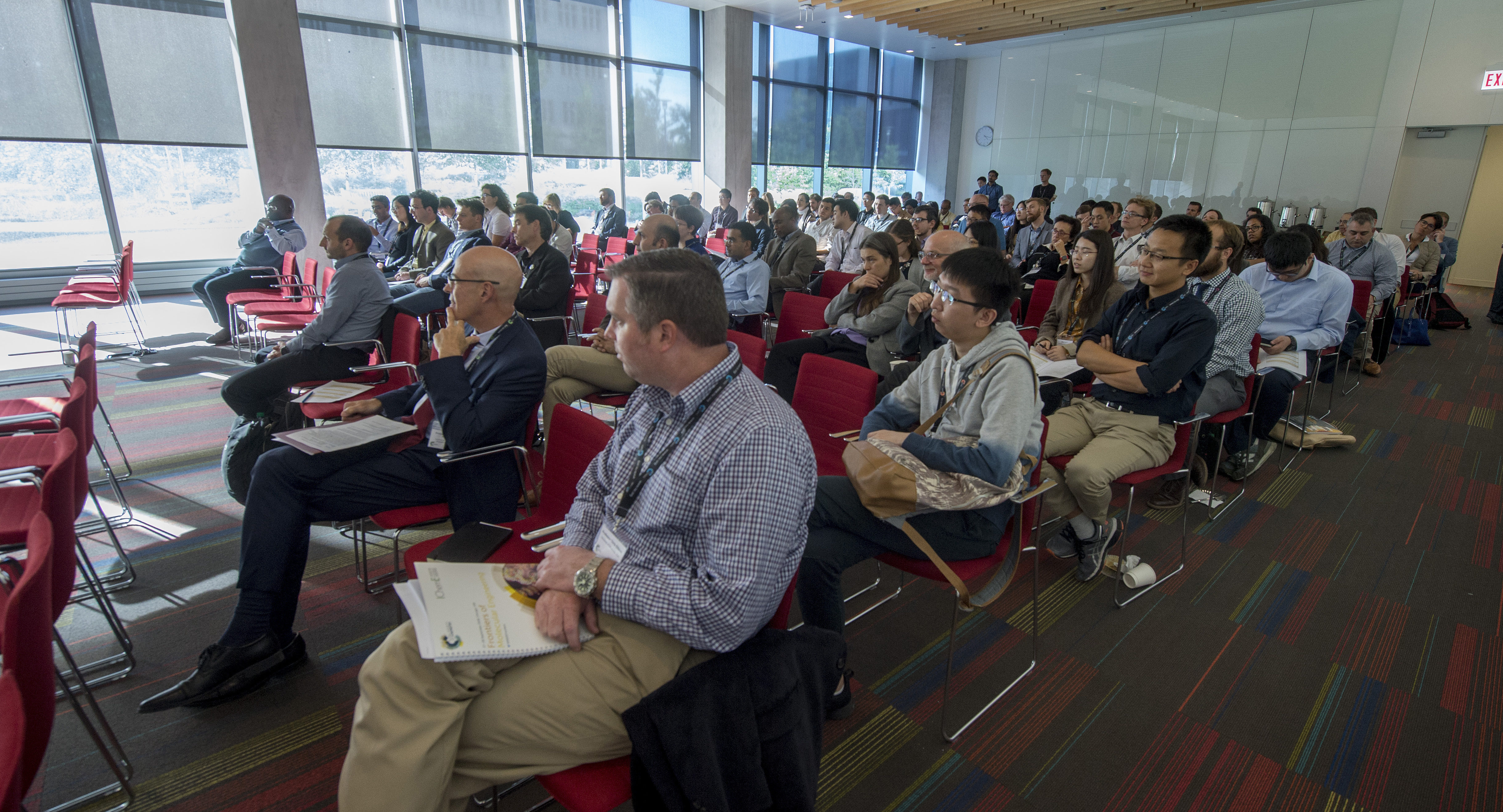
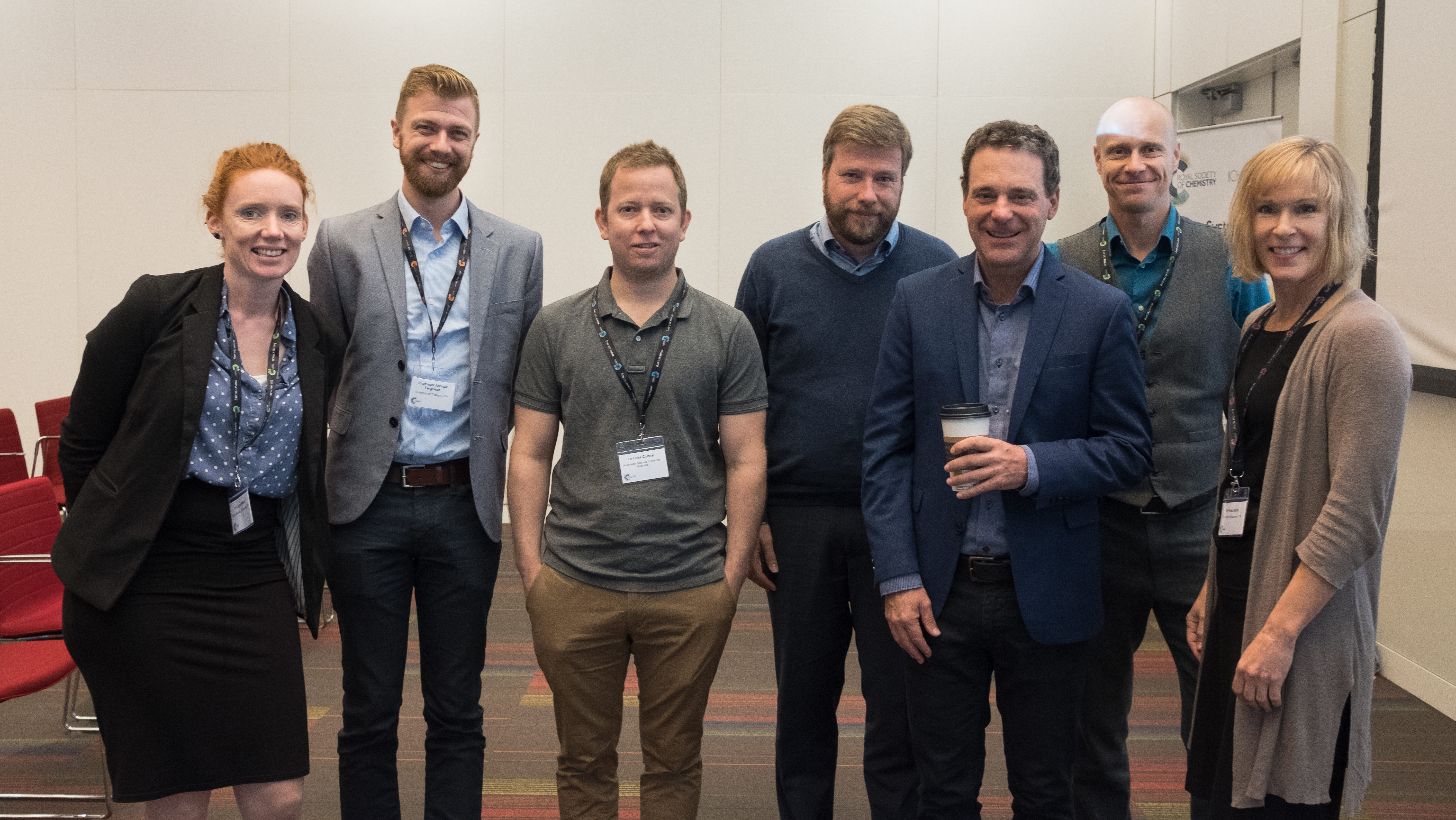
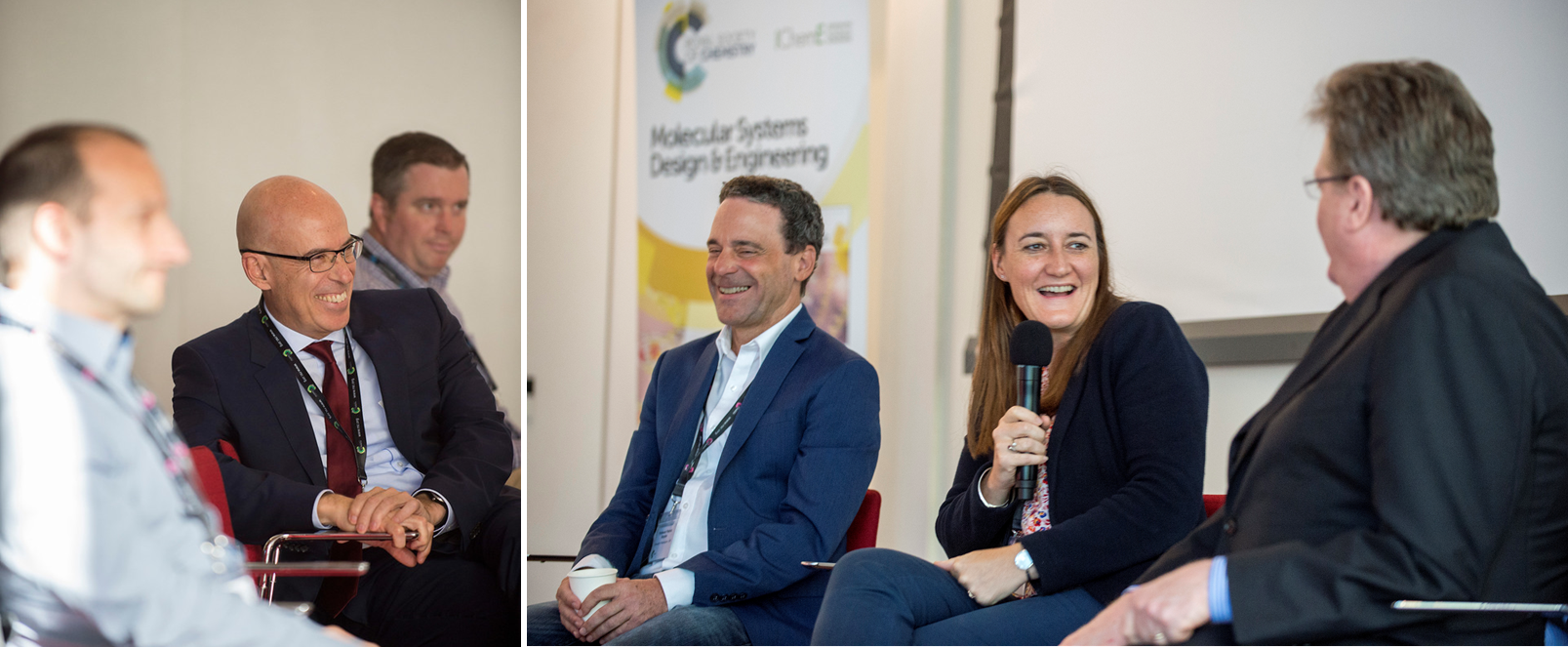
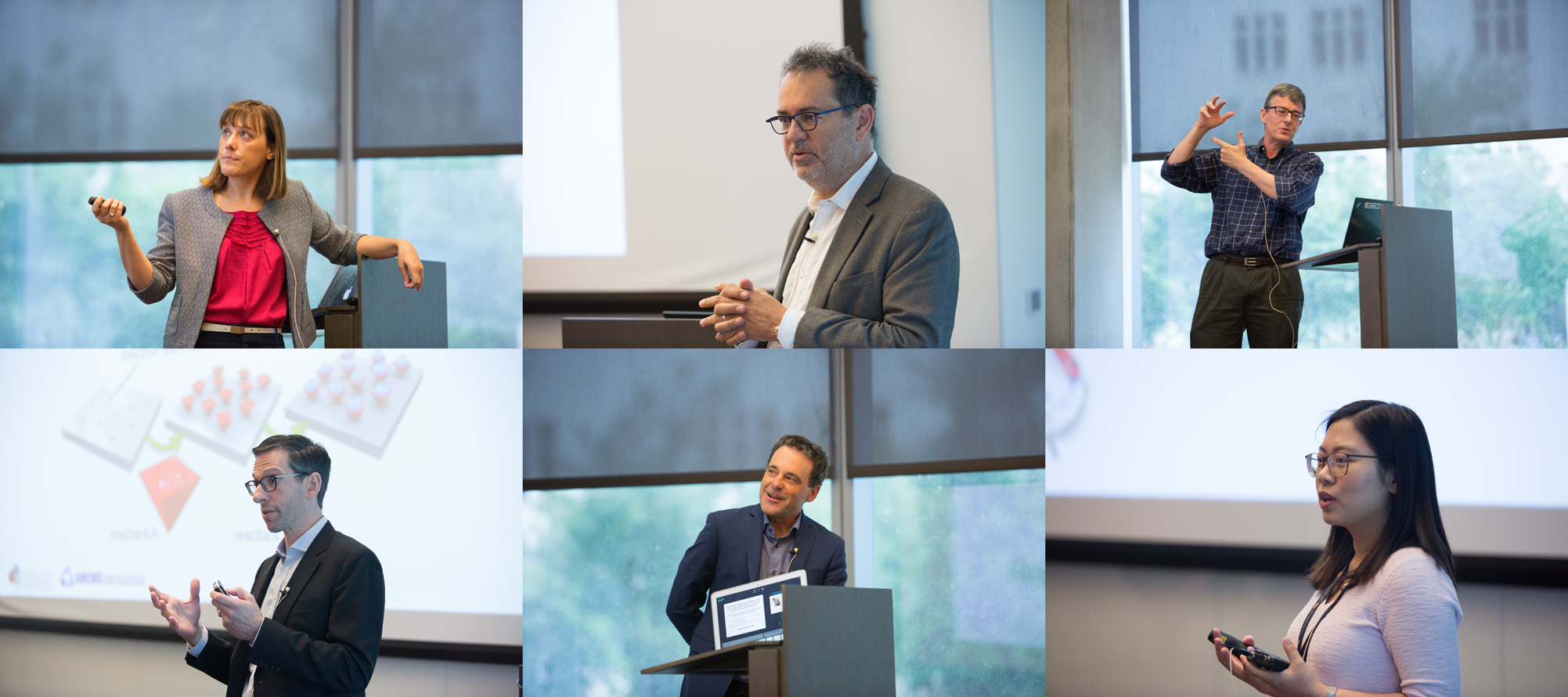
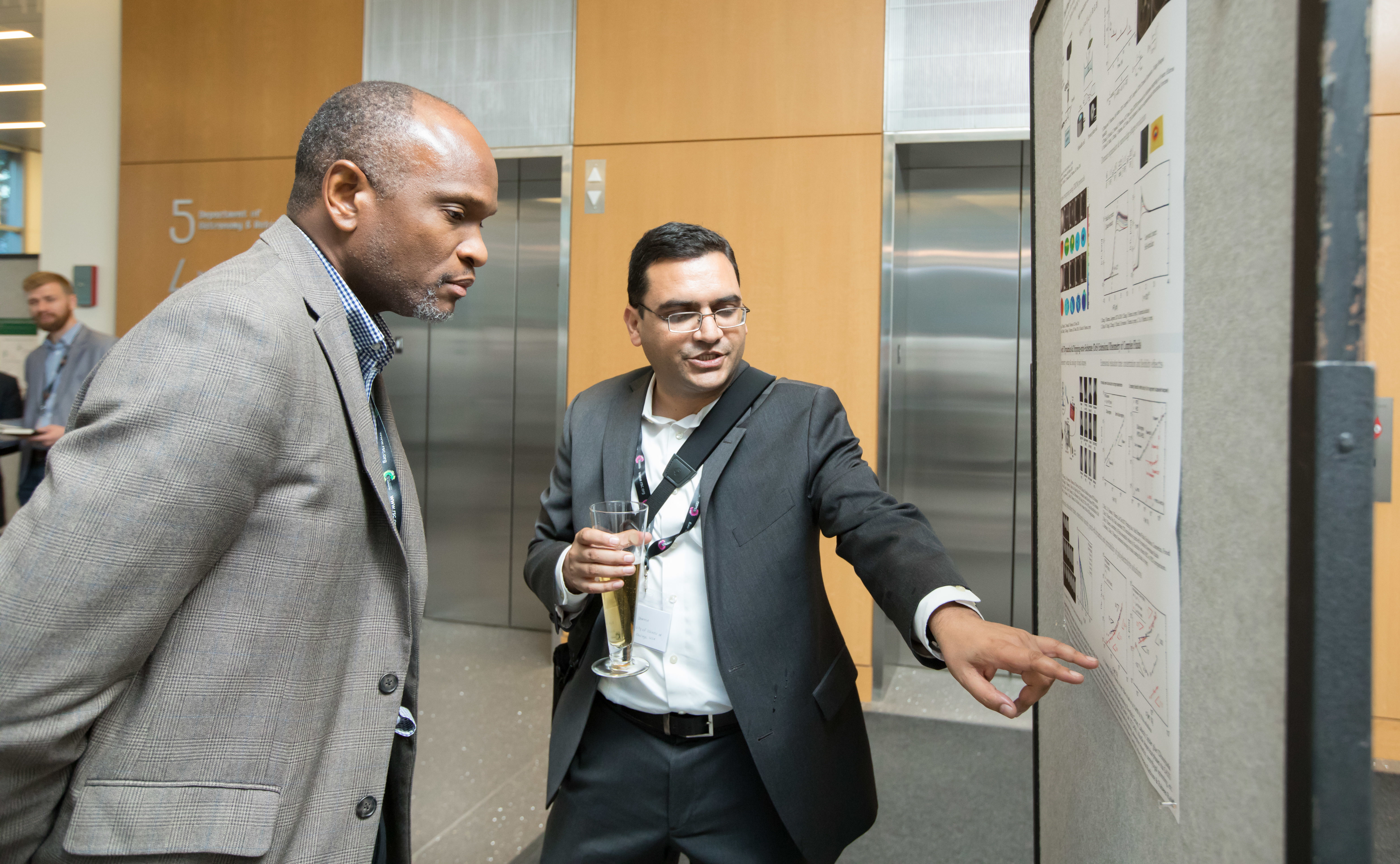
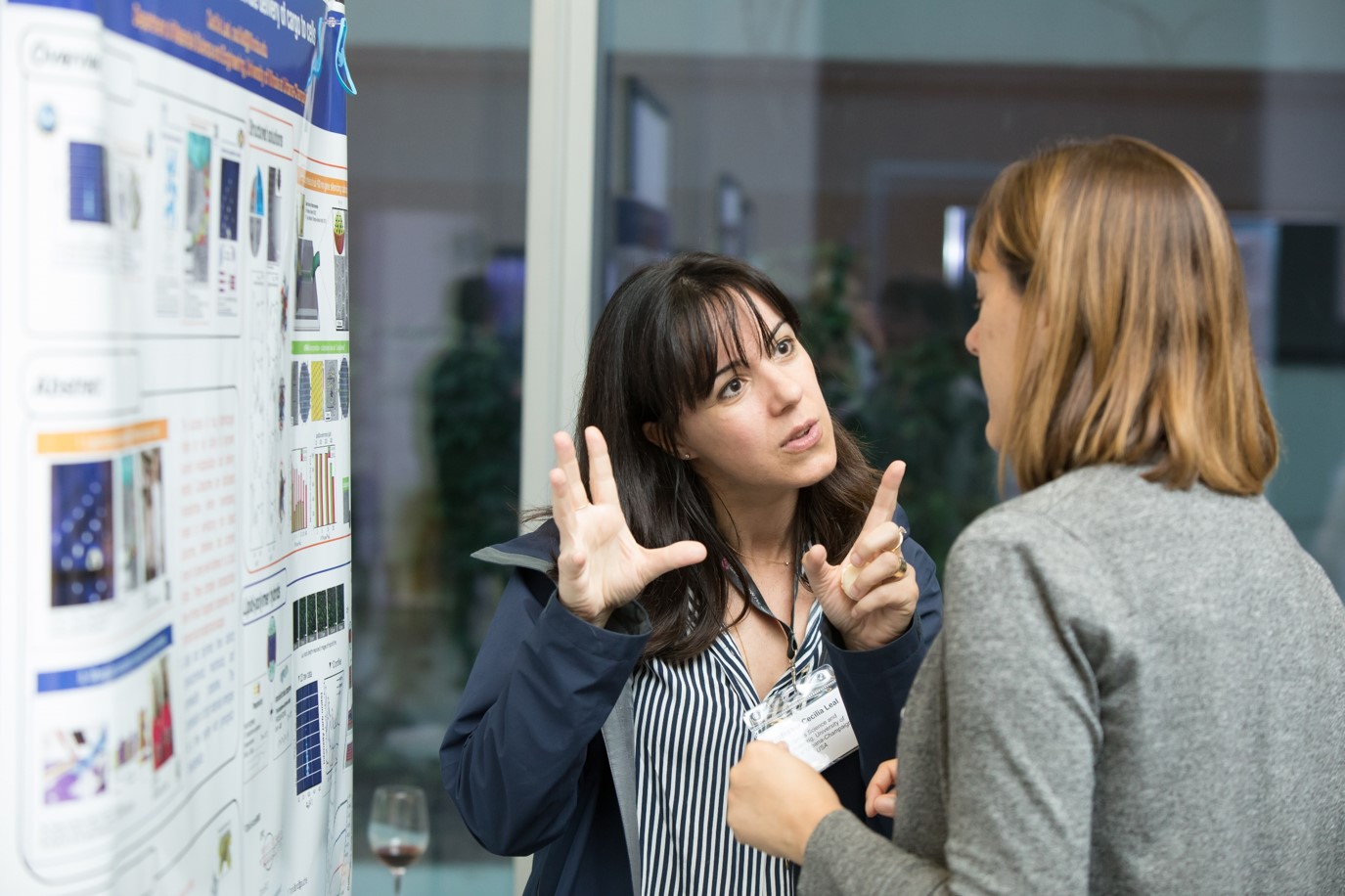
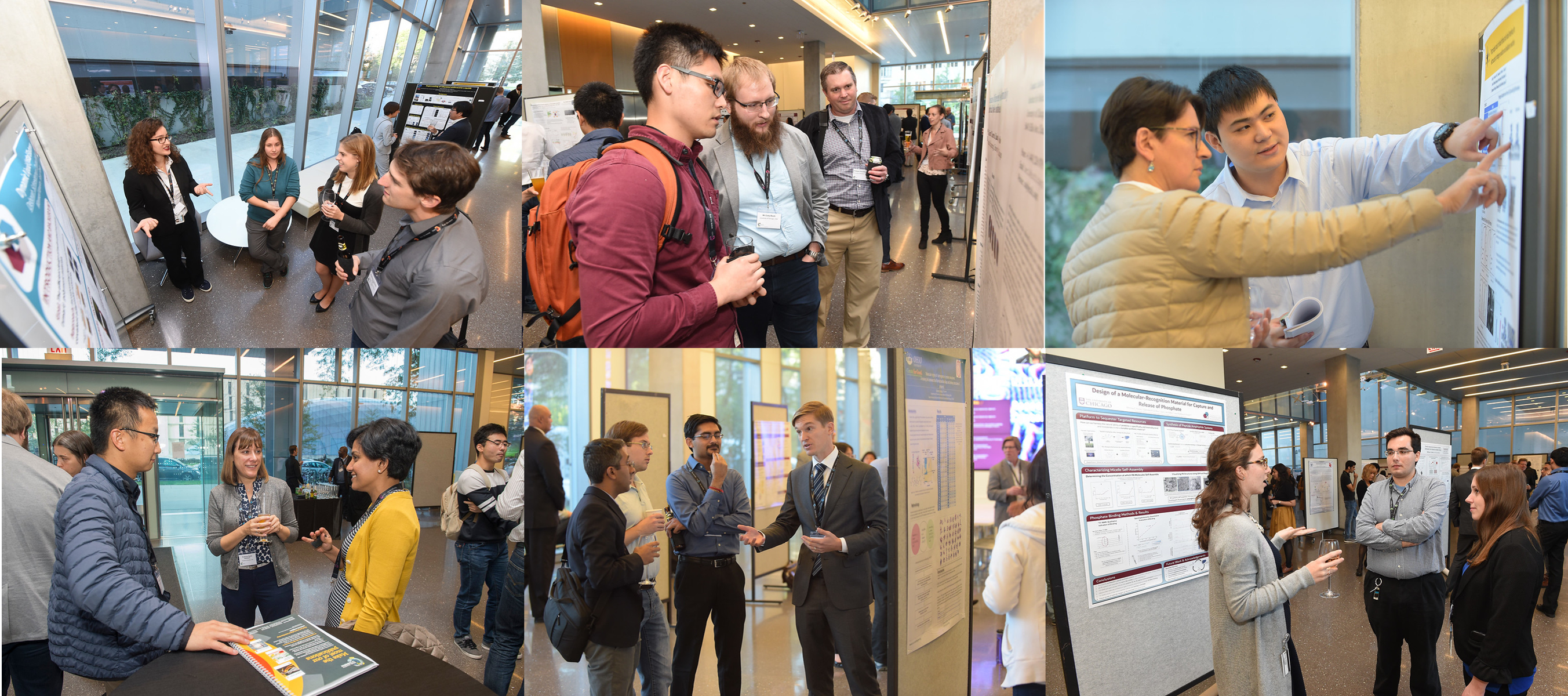
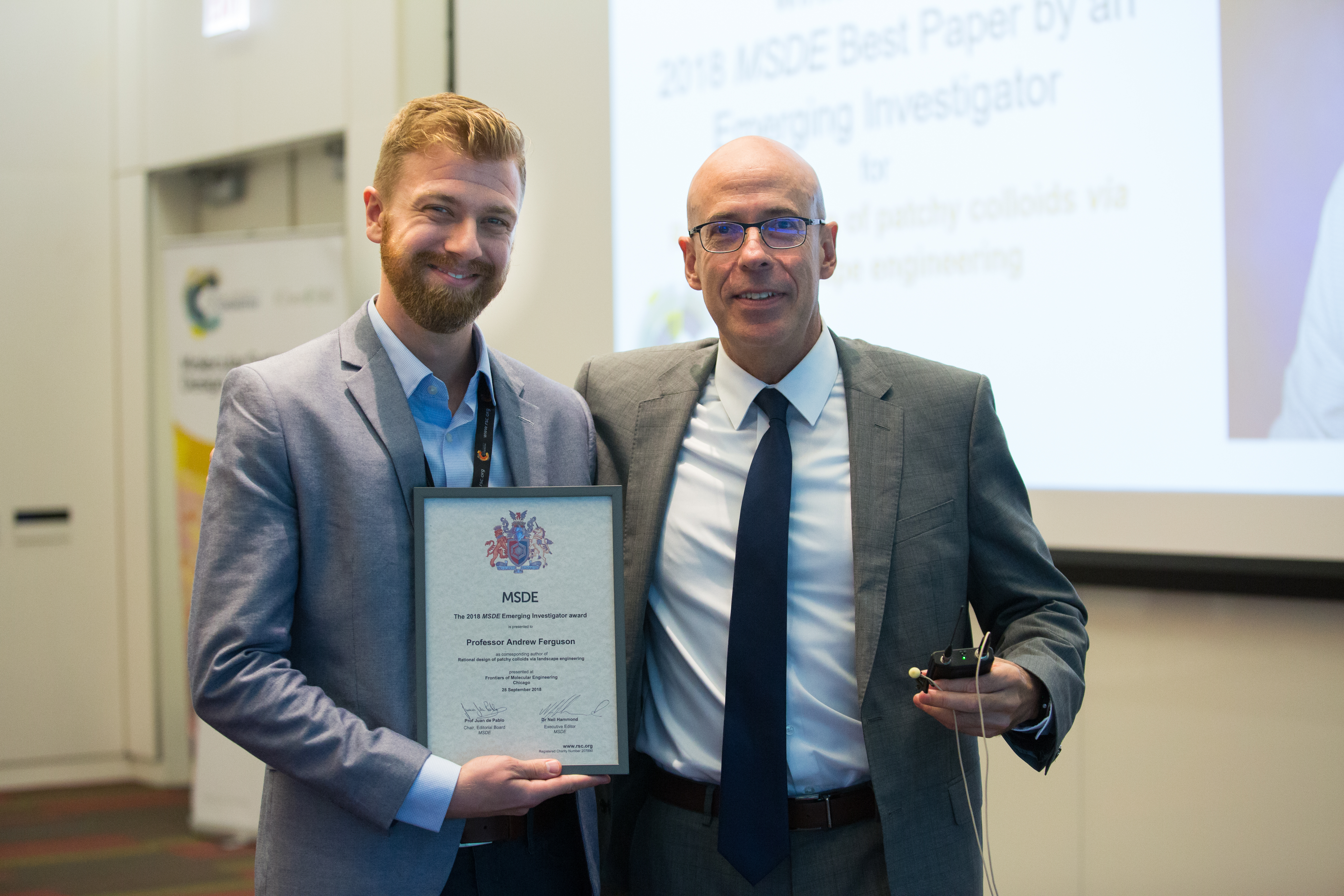
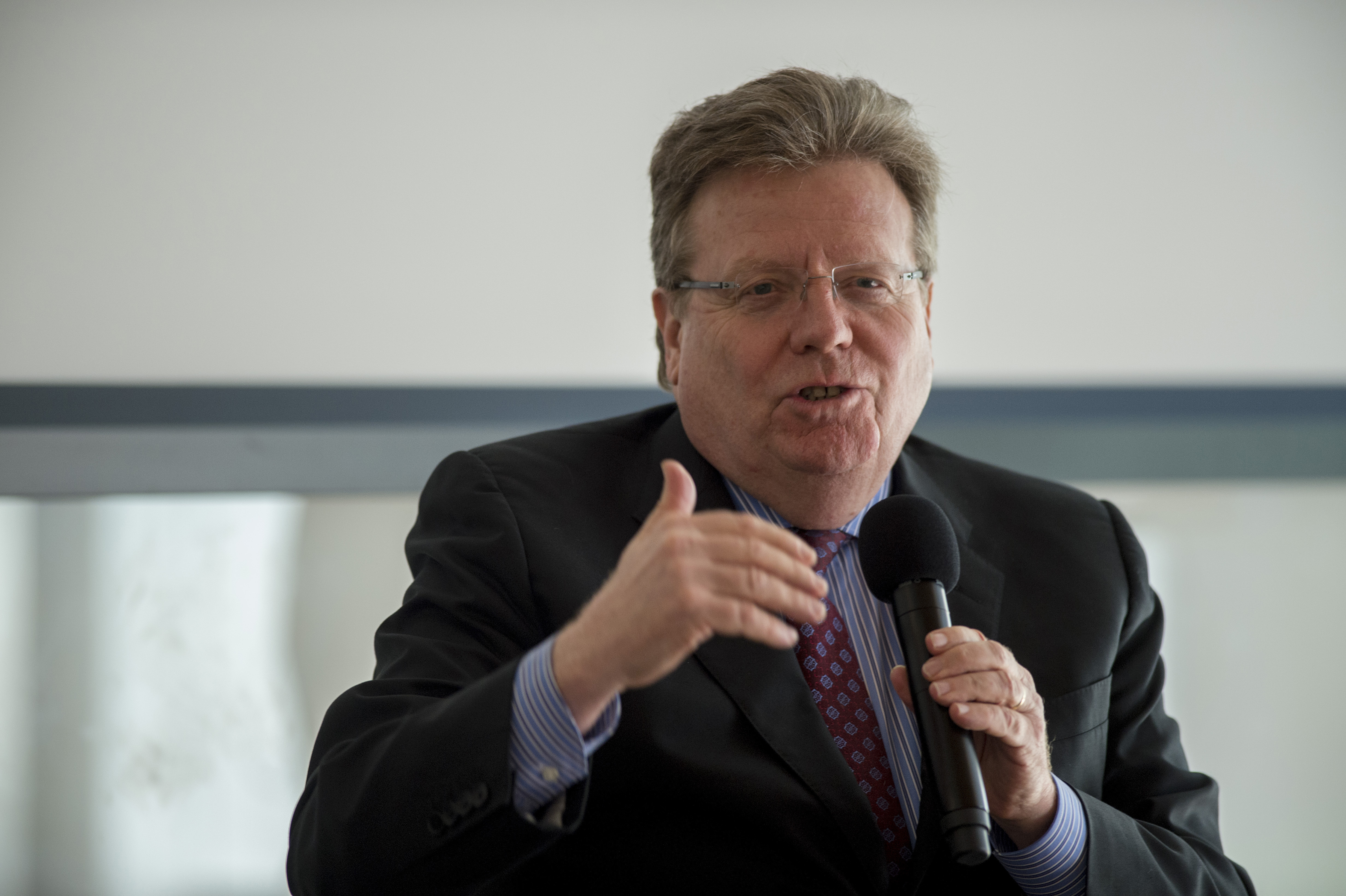
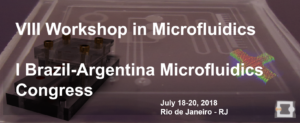
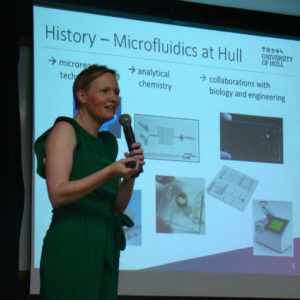
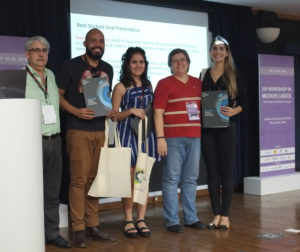
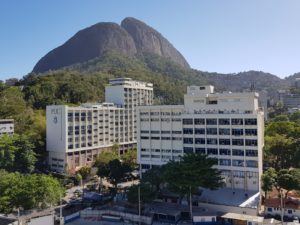
 We wish to extend our sincerest congratulations to all of our Board Members, as they continue to impress the community with their achievements and contributions!
We wish to extend our sincerest congratulations to all of our Board Members, as they continue to impress the community with their achievements and contributions!